처음 접하는 6.25전쟁 사진들..
만세보령 | 2013-10-14 17:49:54
조회 70788 | 추천 0 | 다운로드 57

Gen Douglas MacArthur according to the original AP photo
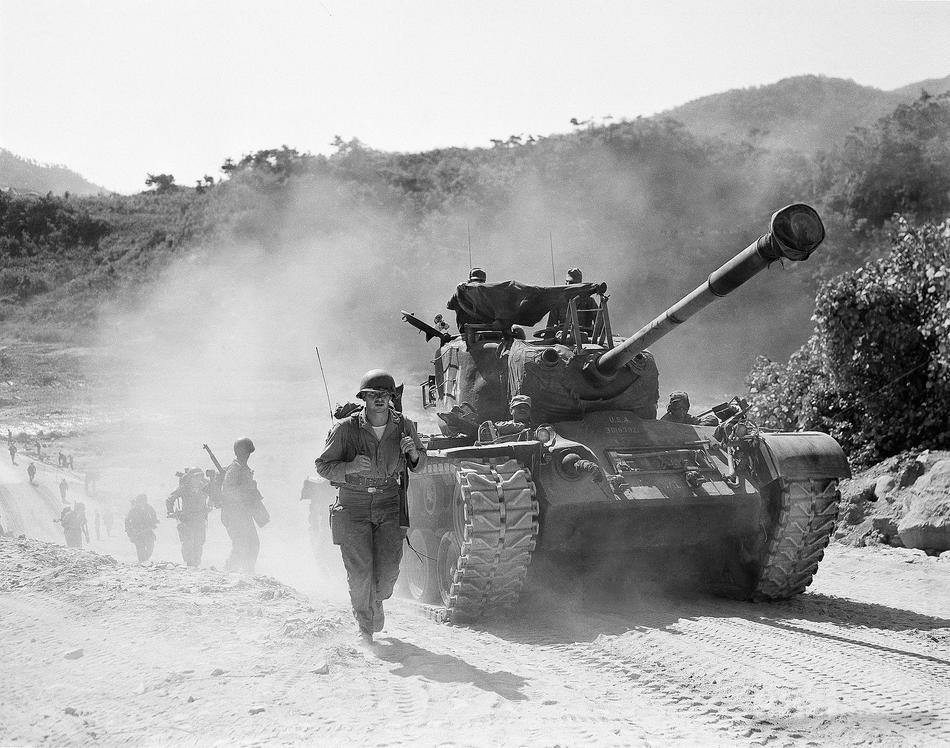
Men of the U.S. 7th Regiment, Third Division, plod along dusty Korean road alongside lumbering tank during field maneuver on Oct. 11, 1953. Although the fighting has halted, the United Nations troops in Korea are continuing their battle training. (AP Photo/Gene Smith)
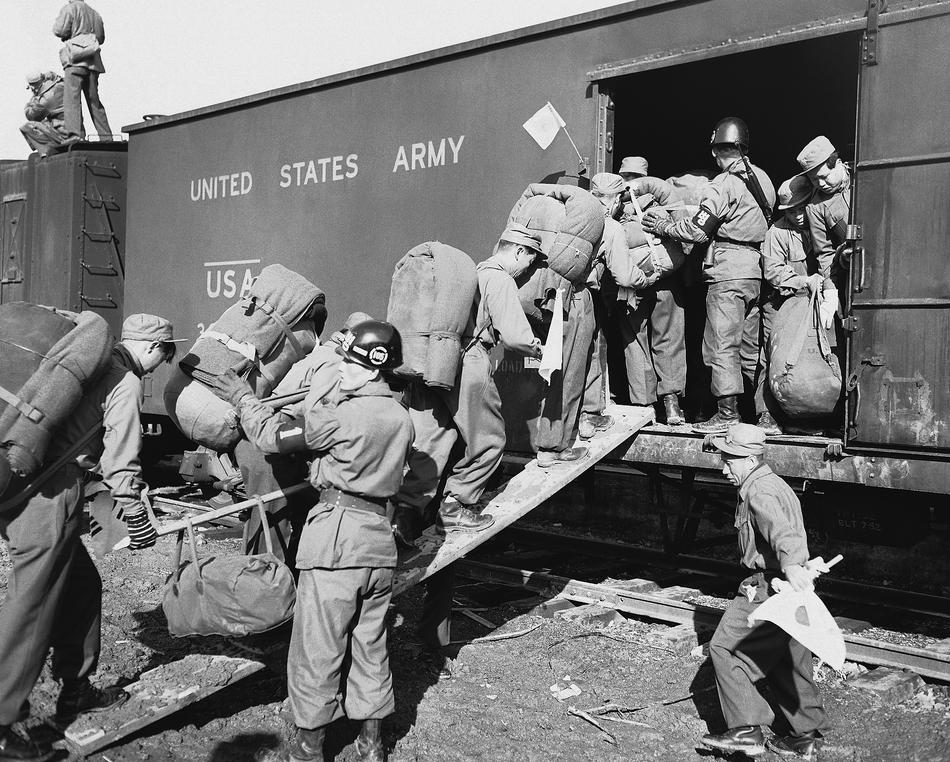
Korea war communist prisoner exchange non repatriates released, Jan. 20, 1954 the North Korean prisoners Load into the flat cars which ill take them southward to the reception centers after they came across from the DZ to the U.N. Receiving point. (AP Photo/Sweers)
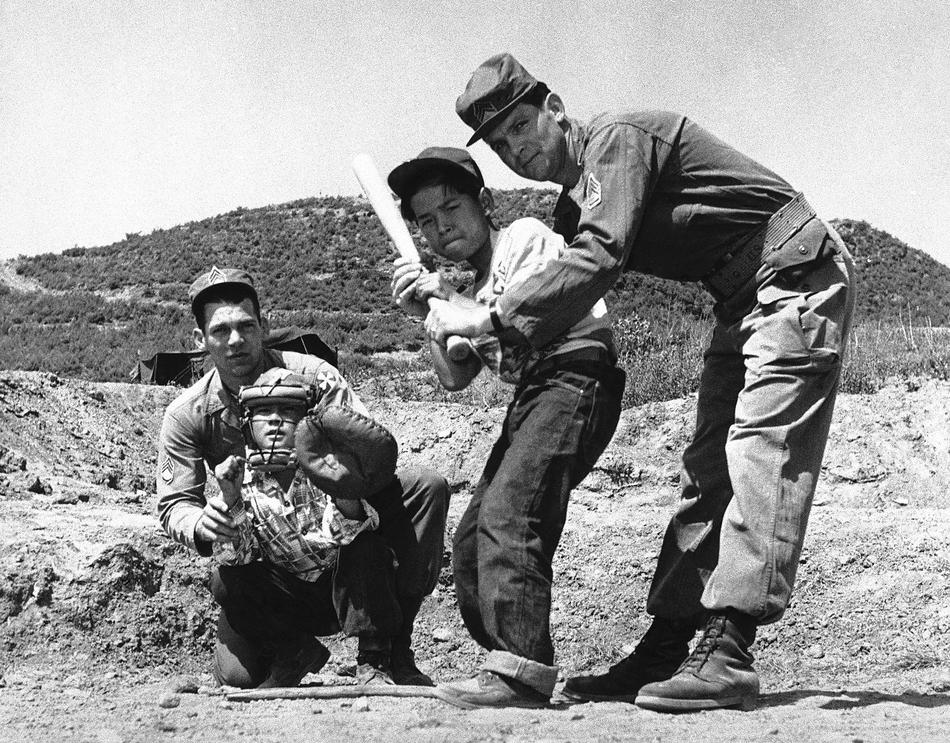
The Korean Kids at the elementary school at Tongduch'on ni, set up by GIs camped nearby in Korea on June 21, 1952, are learning baseball as well as their abc's for a well-rounded education. Sergeant Kenneth D. Henry, of Memphis, Mo., and Sergeant Jess R. Adkins, of Peru, Indiana, are giving instruction in the great American game to two of the older students of the school. (AP Photo)
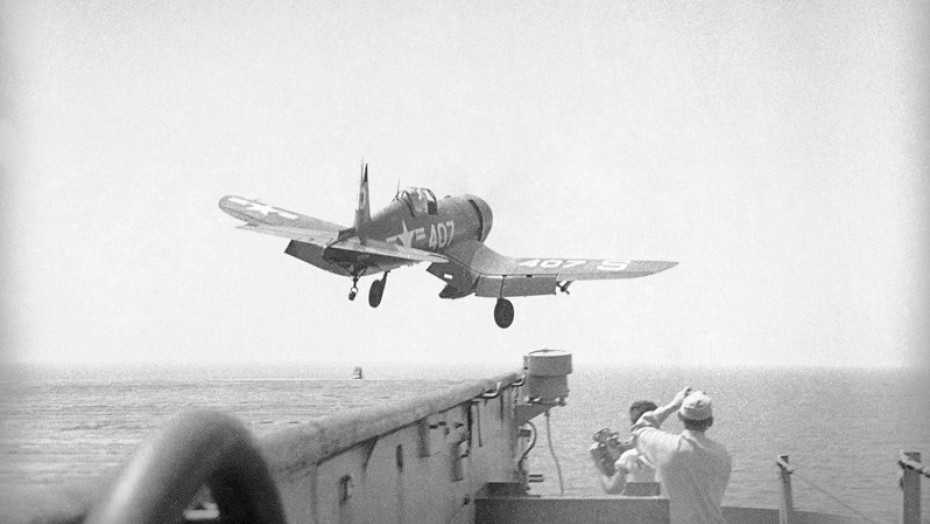
Jets launching from an aircraft carrier somewhere in Korean waters on July 18 1950

No lack of fresh air in this Korean 'barbershop' near the northwestern front on Dec. 31, 1950. Apprehensively awaiting the touch of the icy clippers is Pfc. Joseph Tono of Dickson, Pa. The GI performing the job is Tono's 8th Army Buddy, Cpl. Russell Graff of Jefferson, Wis. (AP Photo)
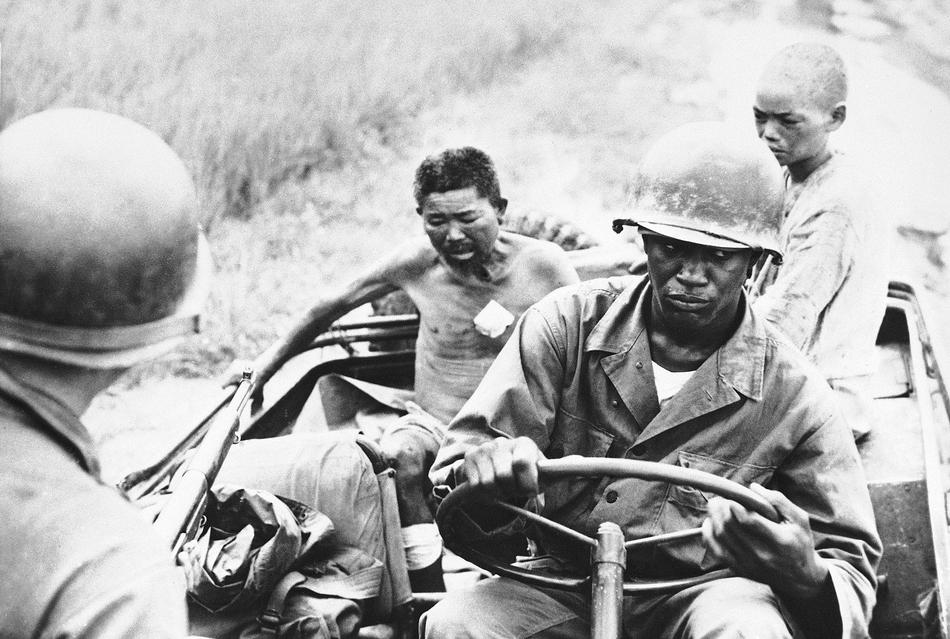
Cpl. Arthur Warrell, right foreground of New York City, and unidentified 25th Division Buddy, left transport wounded North Koreans on Sept. 1, 1950 whom they captured on the southwestern Korean front to a hospital for treatment. (AP Photo)

This North Korean prisoner makes no bones about his joy at being captured with a whole skin. The smiling red was taken by U.S. Marines near Kimpo airfield north of Seoul on Sept. 22, 1950. (AP Photo/Max Desfor ) 
United Nations troops fire from a barricade in Seoul, South Korea, in September 1950. The building at left carries portraits of Soviet leader Josef Stalin and North Korean leader Kim Il Sung. (AP Photo/Max Desfor)
저기 사격표지판 있는데....대검이라도 쳐 박아야하는데 아쉽군요..

American troops and some South Koreans are in a ditch along the road running near the Naktong River in South Korea on Sept. 19, 1950. Its known as the river road. They are in the ditch for protection against enemy shells. (AP Photo/Gene Herrick )
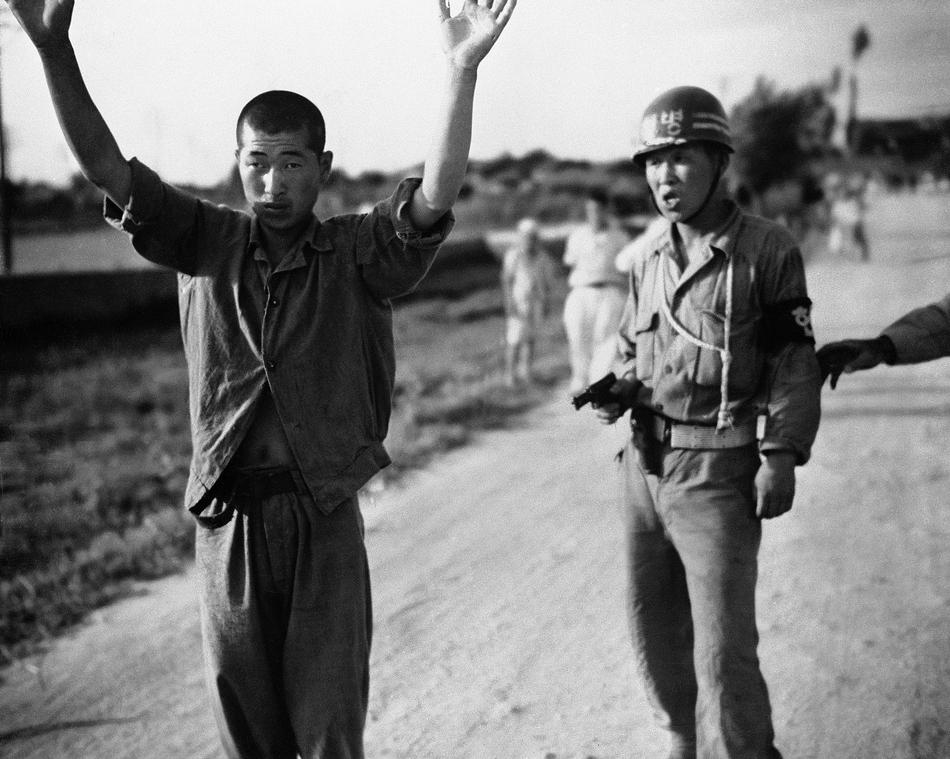
A South Korean military policeman marches a North Korean prisoner of war to a stockade somewhere in South Korea on July 21, 1950. (AP Photo)
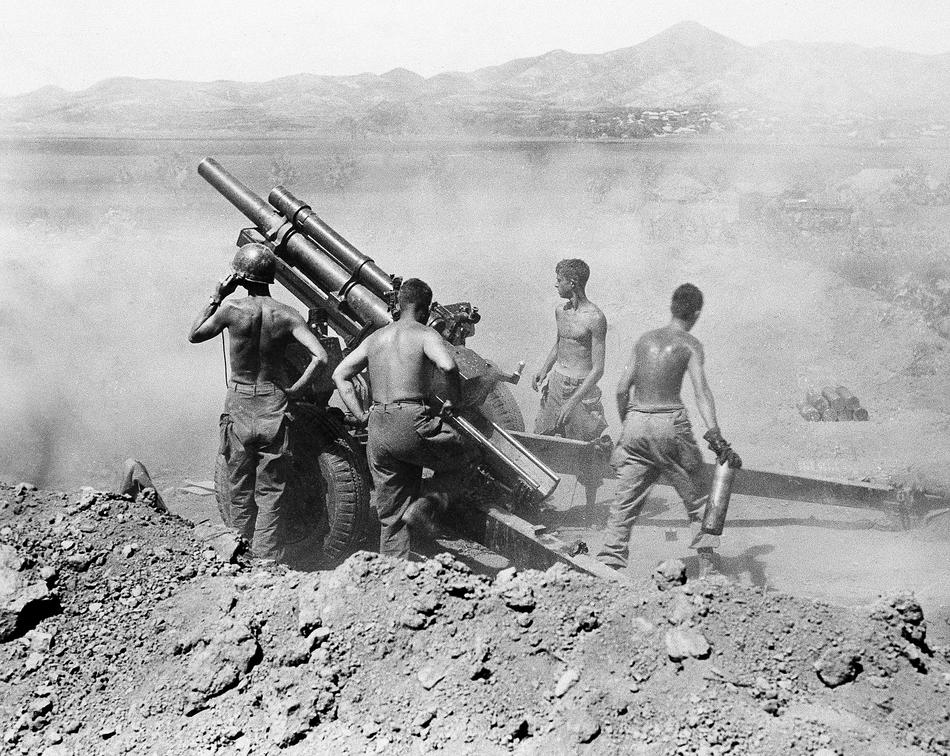
Gun crew of the 25th Infantry Division fire a 105 mm howitzer on North Korean positions near Uirson, in Korea on August 27, 1950. (AP Photo)
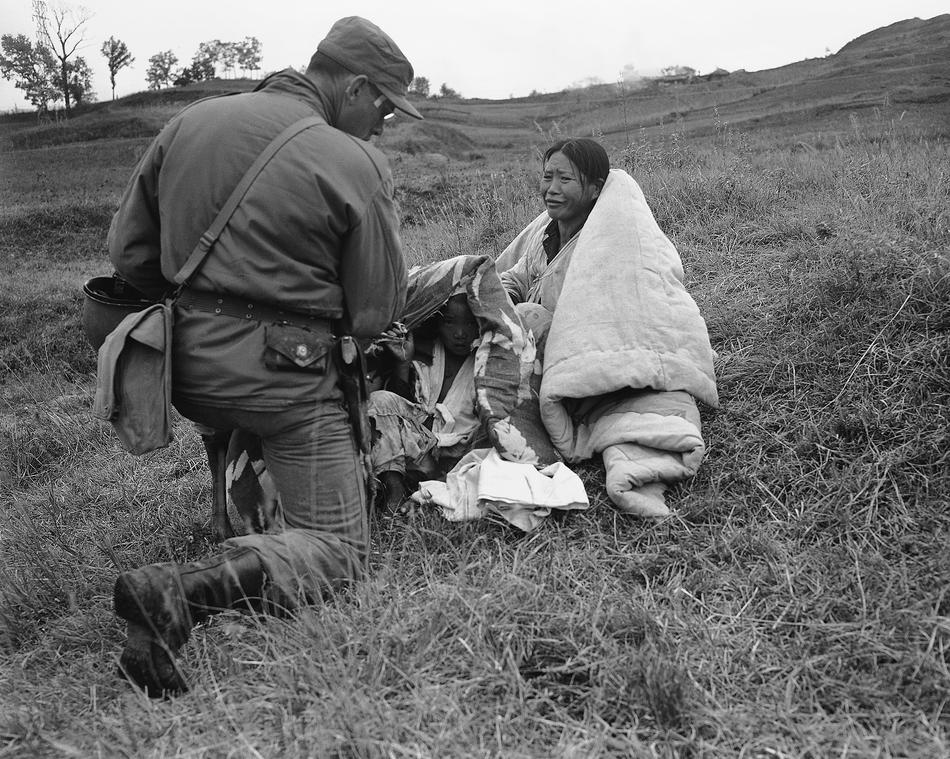
A North Korean mother who fled to the fields keeps her children under wraps as she tries to explain her problems to a U.S. paratrooper who landed in the area near Sunchon, North Korea on Oct. 25, 1950 during operation to out off escape route of fleeing Reds. (AP Photo/Max Desfor)
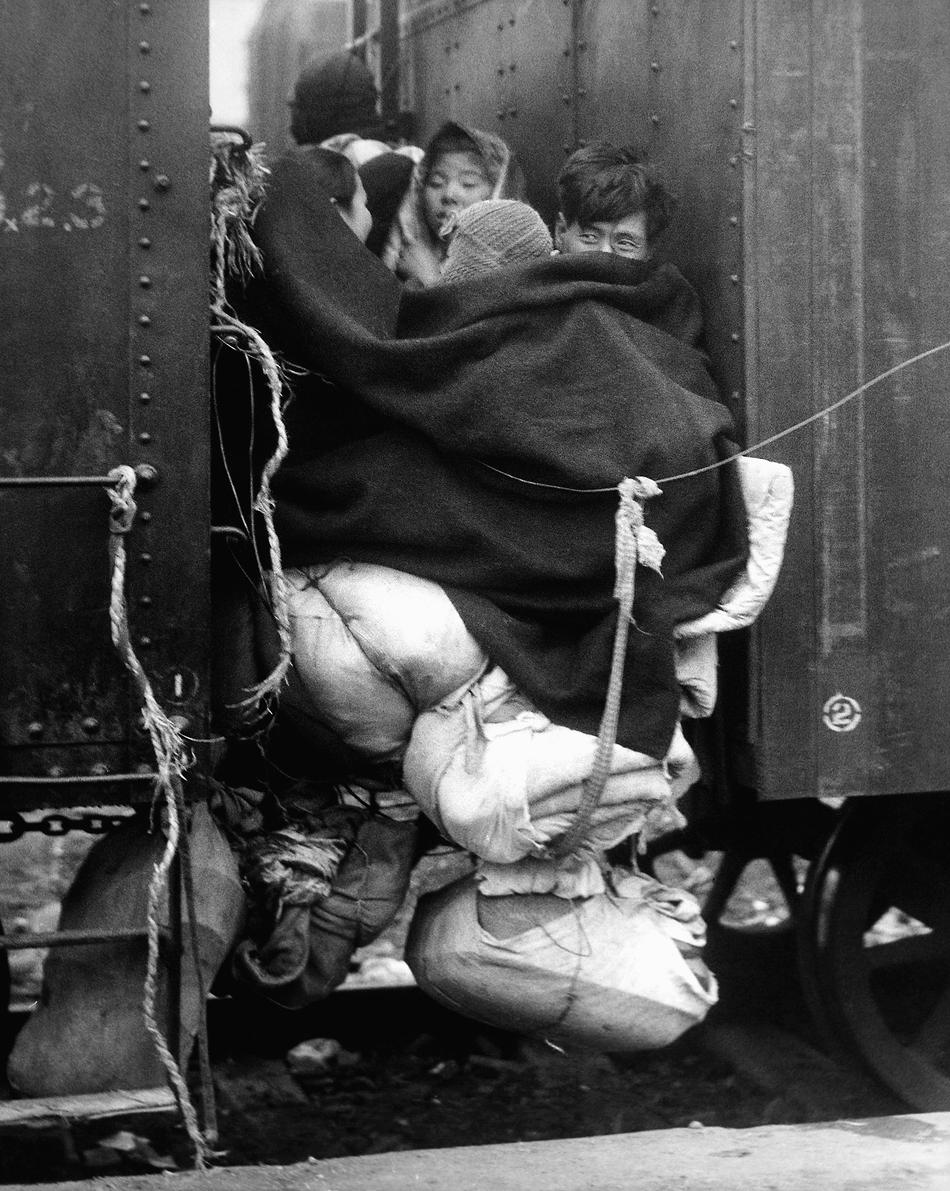
A displaced family huddles for warmth between box cars in Sinmak, North Korea, as Communist troops advanced southward in December 1950. (AP Photo/Max Desfor)

Cpl. Clifford Rodgers, Muskogee, Okla., looks at bound wrist of a Korean Civilians found in deep snow on Jan. 27, 1951 near Yangji, about 15 miles northwest of Ichon on the central front. The atrocity victim, one of several found in the area, presumably had been killed by reds retreating before allied advance. (AP Photo/Max Desfor
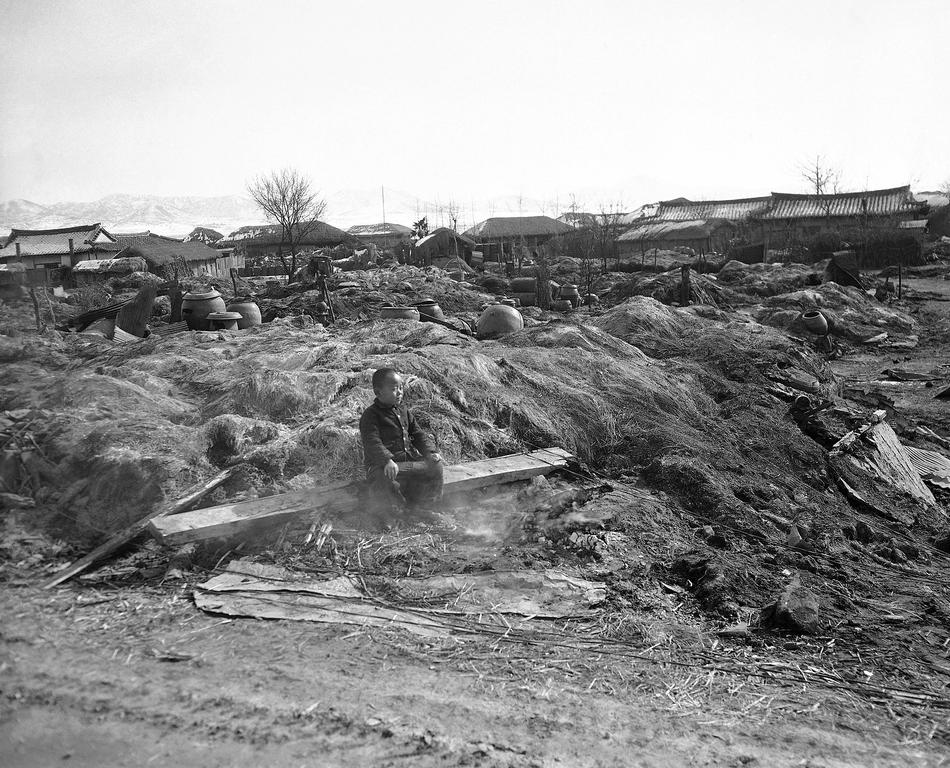
A Korean waif sits in smoldering ruins of his home destroyed by fire in the Suwon area on Feb. 3, 1951 as allied troops burned dwellings which might provide shelter for red troops. Native water jars are the only possessions recognizable in ruins of other native homes in background. (AP Photo/Jim Pringle)
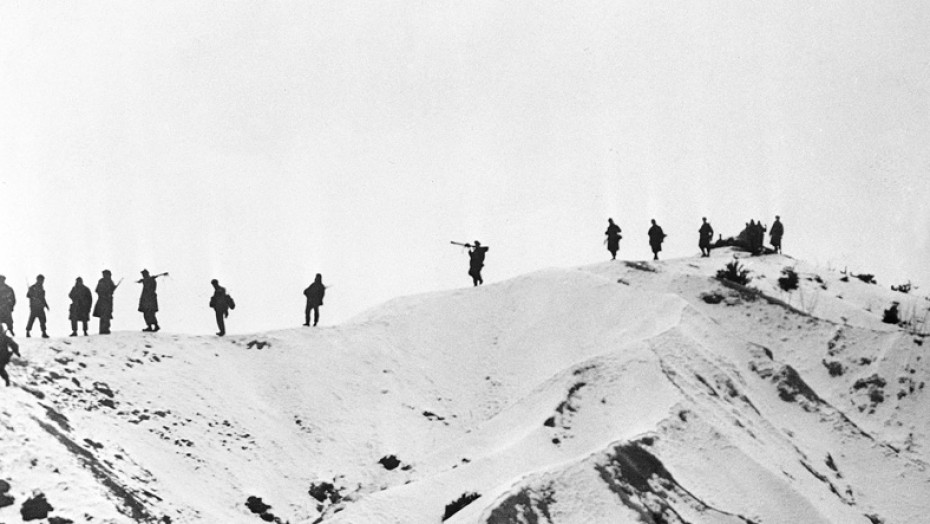
Soldiers of the US 24th Infantry Division search for enemy lines and positions on Jan 24 1951

The last wounded UN soldier to be evacuated from Pyongyang before it was abandoned by retreating United Nations forces is loaded aboard a transport plane at Pyongyang airfield on Dec 7 1950

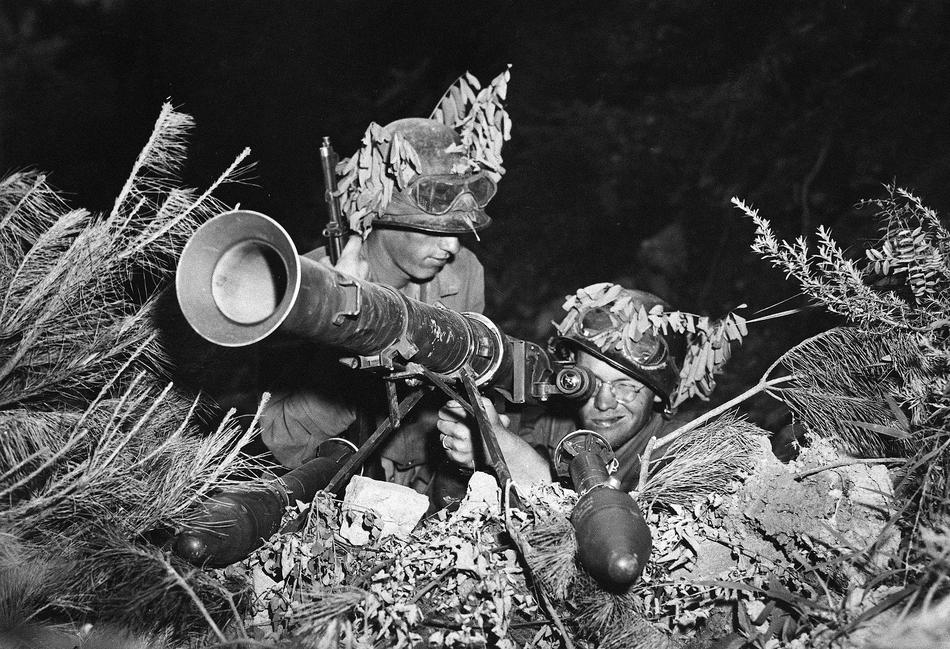
Two American soldiers line up a 3.5 rocket launcher bazooka along the battlefront somewhere in Korea, July 24, 1950. (AP Photo
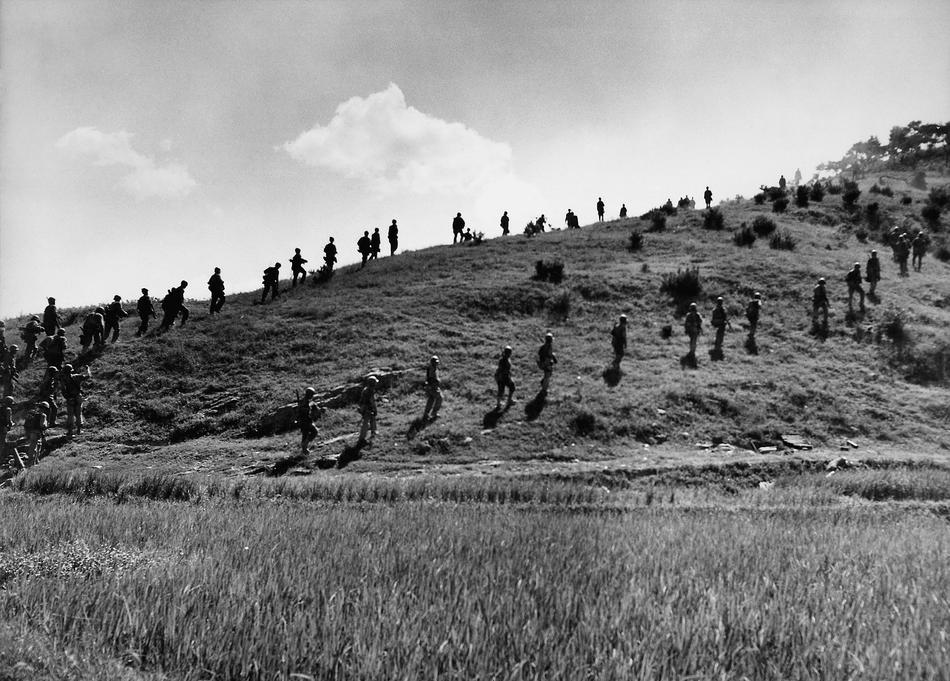
U.S. Marines advance up a ridge in South Korea. The war that began in Korea 60 years ago, on June 25, 1950, a ghastly conflict that killed millions and left the peninsula in ruins, became "The Forgotten War" in many American minds. (AP Photo/Max Desfor)

American soldiers leave the railroad station at Taejon, South Korea, en route to the battle front. The war that began in Korea 60 years ago, on June 25, 1950, a ghastly conflict that killed millions and left the peninsula in ruins, became "The Forgotten War" in many American minds. (AP Photo)
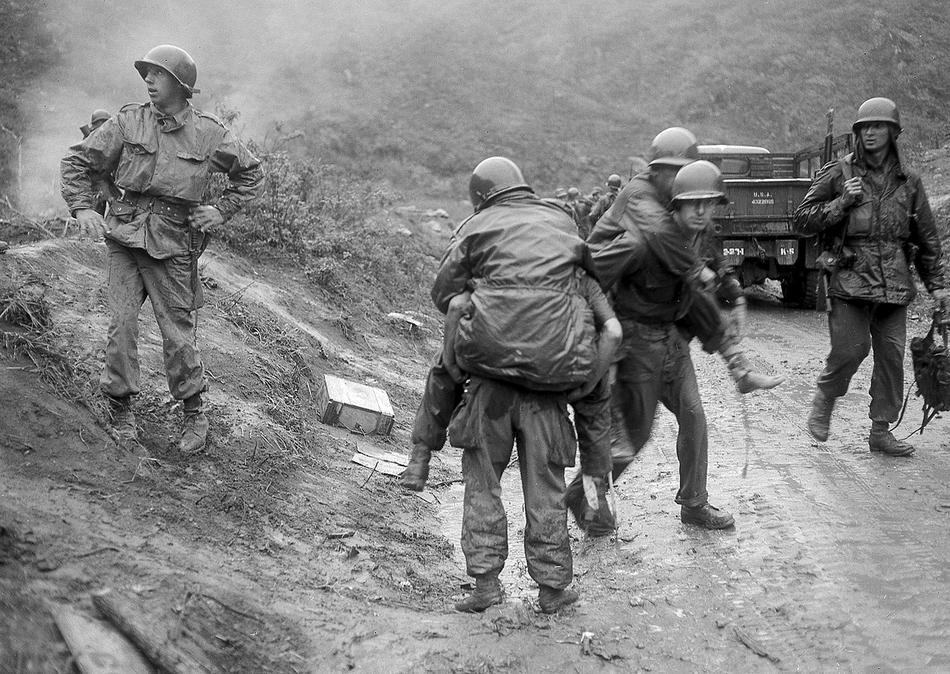
American soldiers are carried on the backs of other GI's from Heartbreak Ridge through the rain to an aid station just behind the front lines in South Korea during the Korean War. The 2nd Division GI's, wounded in an ambush as they came off the Ridge for a two-day rest, had spent two weeks in the line during the height of the bloody battle on the east central front. (AP Photo)
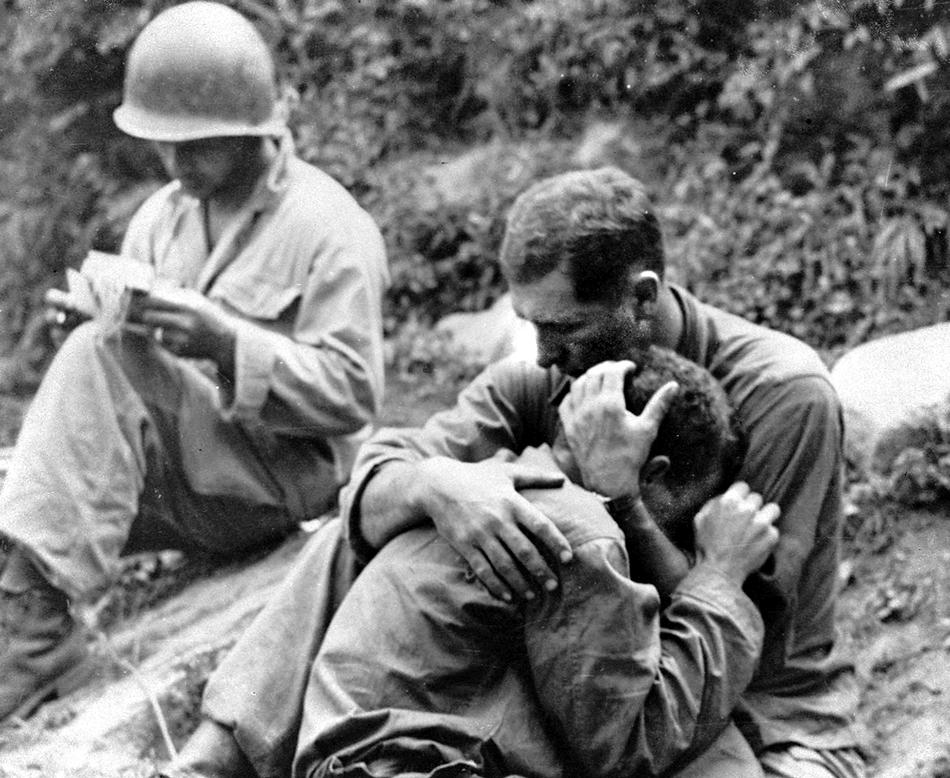
An American infantryman, his buddy killed in action in the Korean War, weeps on the shoulder of another GI somewhere in Korea, Aug. 28, 1950. Meanwhile, a corpsman, left, goes about the business of filling out casualty tags. No identifications available. (AP Photo/Al Chang)

A packed refugee train heads south through Seoul railroad yards as South Koreans continue to flee from the capital during the Korean War on Dec. 27, 1950. More than half of the city's 1,000,000 residents have left the capital, threatened by massed Communist troops to the north, to seek safety in the southern part of the peninsula. (AP Photo)

U.S.military policeman searches Korean woman refugee for possible hidden weapons on Naktong River beach in South Korea on Sept. 27, 1950 after U.S. 24th Division drive across the river west of Taegu. Among onlookers in one youngster who obviously needs no search. (AP Photo/Gene Herrick)
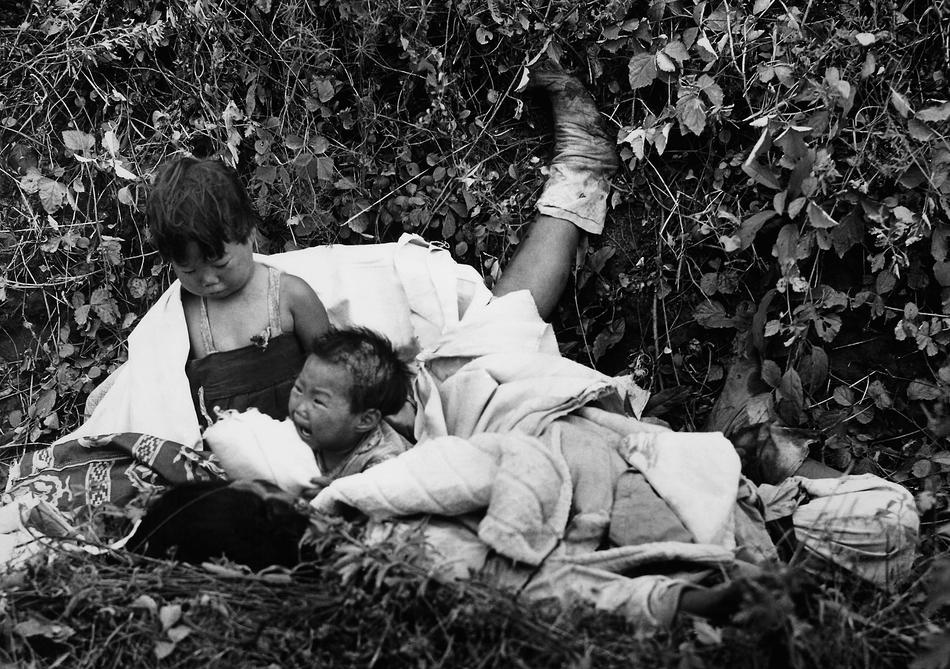
Two children orphaned by the war are stranded in a ditch beside the body of their dead mother on the road to Pyongyang, North Korea, in Oct. 22 1950. British and Australian troops took the children to safety. (AP Photo/Max Desfor)

A blinding snowstorm in Korean waters halts flight operations aboard the Aircraft Carrier Leyte on Dec. 16, 1950. The planes are already loaded with bombs, rockets and 20mm projectiles and were again in action a short time after the storm ended. (AP Photo)
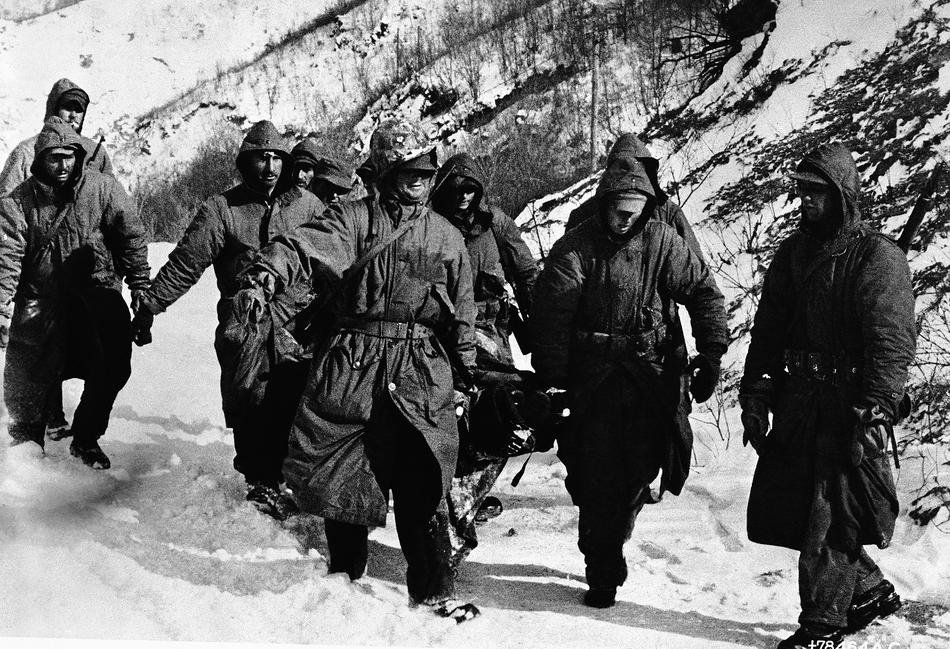
Expressions reflecting the showy cold of North Korea, frostbite casualties of First Marine Division and Seventh Infantry Division who linked to break out of Communist encirclement in the Changjin area, North Korea on Dec. 22, 1950, wait for evacuation by plane. (AP Photo/DOD)

Marine Sgt. William T. Hathaway of Danville, Virginia, looks over the wreckage of Hanjung, Korea, Dec. 20, 1950, before the withdrawal from that city by U.N. forces now compressed into the Hungnam beachhead in northeast Korea. (AP Photo)

This homeless brother and sister make a vain attempt to keep warm near a small fire in the Seoul Railroad Yards on Dec. 29, 1950. (AP Photo)
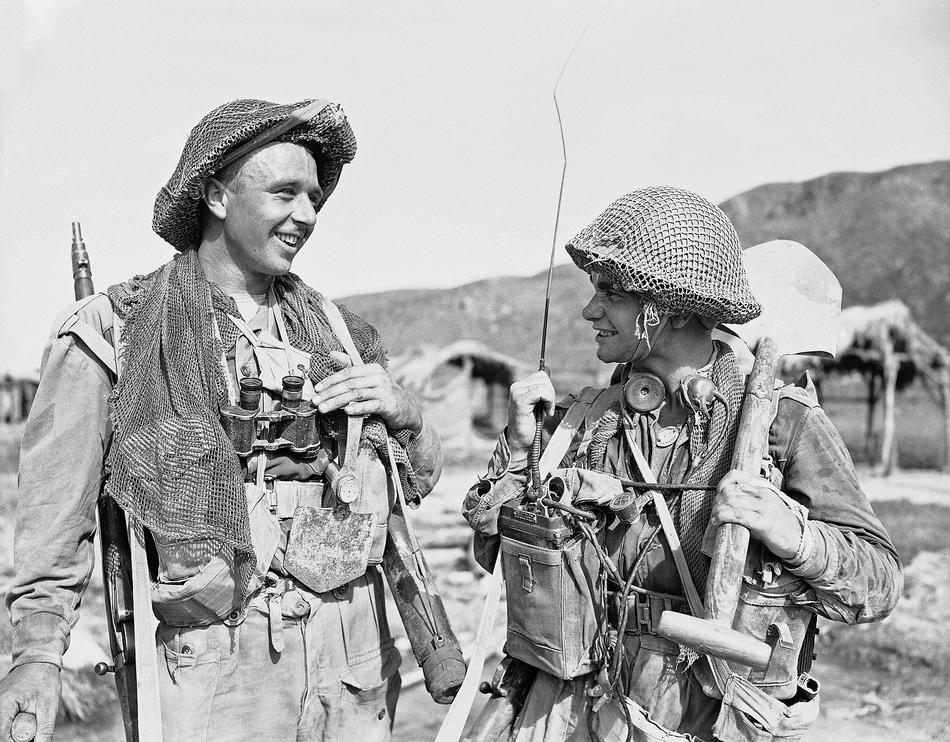

A US 25th Div. Inf. gets set to heave a grenade at enemy sniper hidden in a village 20 miles north Taegu on Naktong River front in Korea on August 29, 1950. (AP Photo)
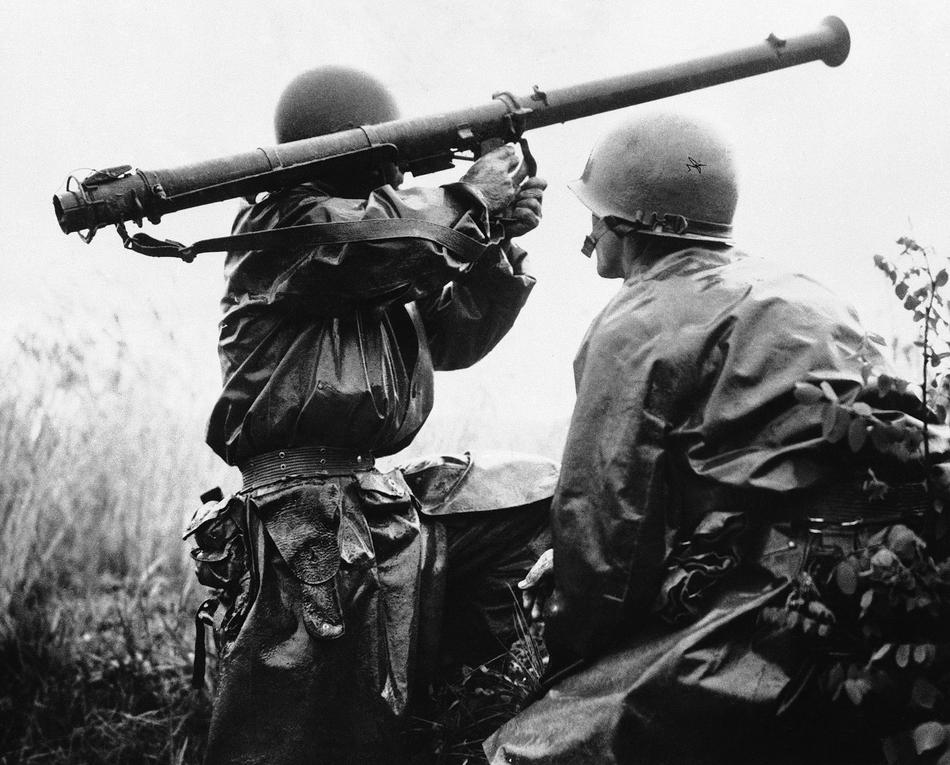
A bazooka team fires at enemy tanks near the front lines in the battle for South Korea on July 5, 1950. (AP Photo)

Republic of South Korea policemen come to the aid of an assemblyman (wearing straw hat) being attacked by supporters of President Syngman Rhee. The demonstrators, who were demanding that the assembly give into Rhee or dissolve itself, closed in on the law maker as he tried to leave the National Assembly Hall in Pusan, June 28, 1952. (AP Photo/FW)

Lt. Earl Hargroder (right), medical officer of the U.S. 38th Infantry Regiment, administers blood plasma to Pvt. Eulogio Santiago of Puerto Rico at a forward aid station in Korea on Sept. 11, 1952, after he had been wounded by mortar fire on a bunker on 'Old Baldy.' (AP Photo)
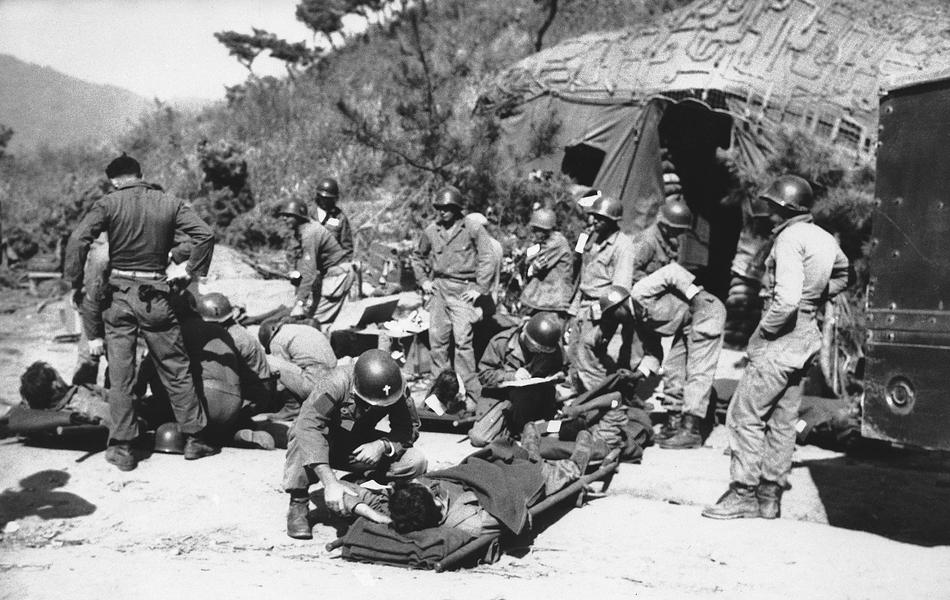
An Army chaplain (foreground) gives comfort to a wounded GI while medical corpsmen go about their business of taking care of other wounded at an aid station near Triangle Hill in Korea where these troops were hit on Oct. 19, 1952. (AP Photo/ Fred Waters)
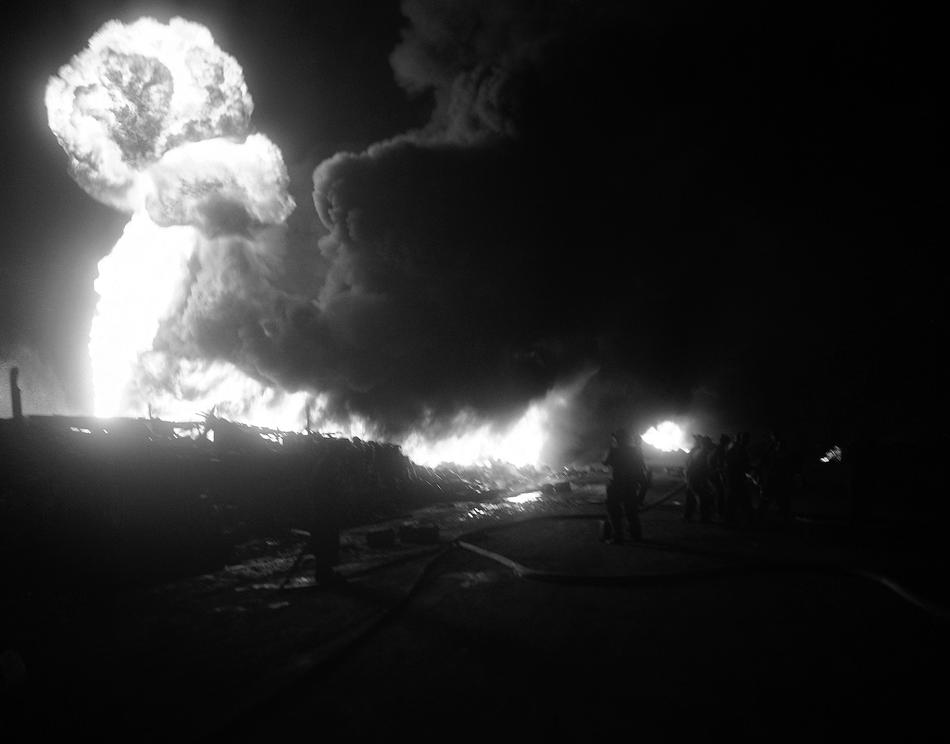
Fifteen low-flying communist aircraft bombed the port city of Inchon, near Seoul, June 20, 1953, the night of June 16th and set off a giant fire with a hit on a fuel dump. Leaping flames from the burning petroleum, oil and lubrication dump lighted the sky for more that 20 miles. Fifth Air Force said the damage done by the fire was undetermined so far. The firemen and soldiers help in trying to douse the immense flame billowing into the dark night sky. (AP Photo)
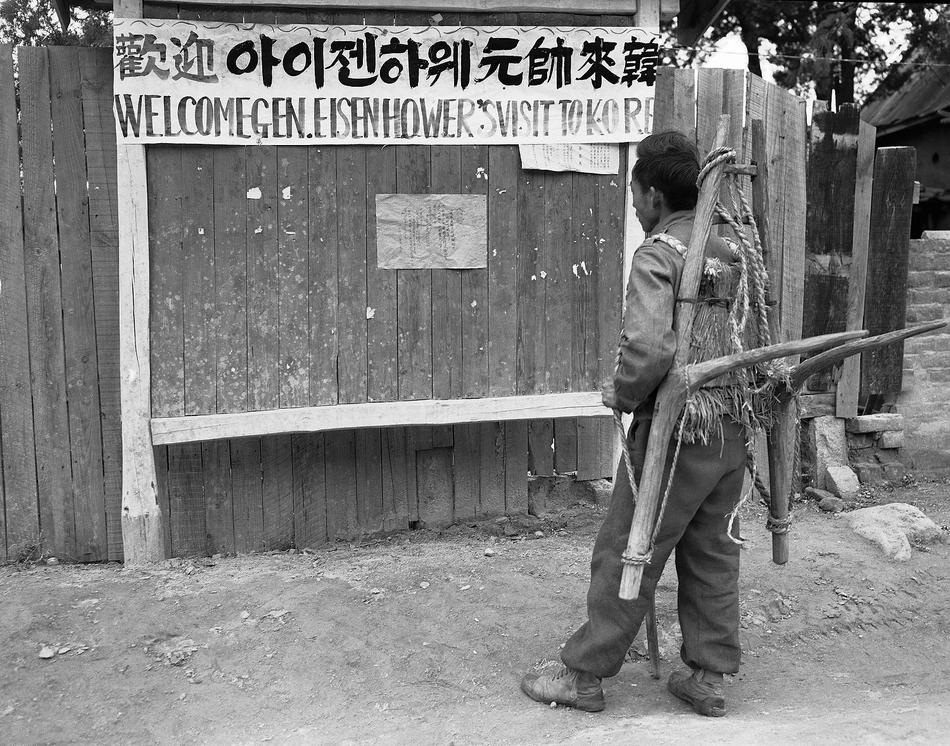
A Korean, with an 'A'frame carrier strapped to his back, pauses on a Seoul, Korea, street on Nov. 28, 1952 to read sign posted in English and Korean in anticipation of a visit by President-elect Dwight D. Eisenhower. (AP Photo/George Sweers)

An army corporal at Panmunjom took this picture in Korea on Oct. 8, 1952 as the last jeep of the United Nations convoy departed for Munsan, after Korean truce talks at Panmunjom had been recessed indefinitely. Somebody had just put the identifying sign on the rear of the jeep. The picture has just become available on November 10, by air from Tokyo, Japan. (AP Photo)
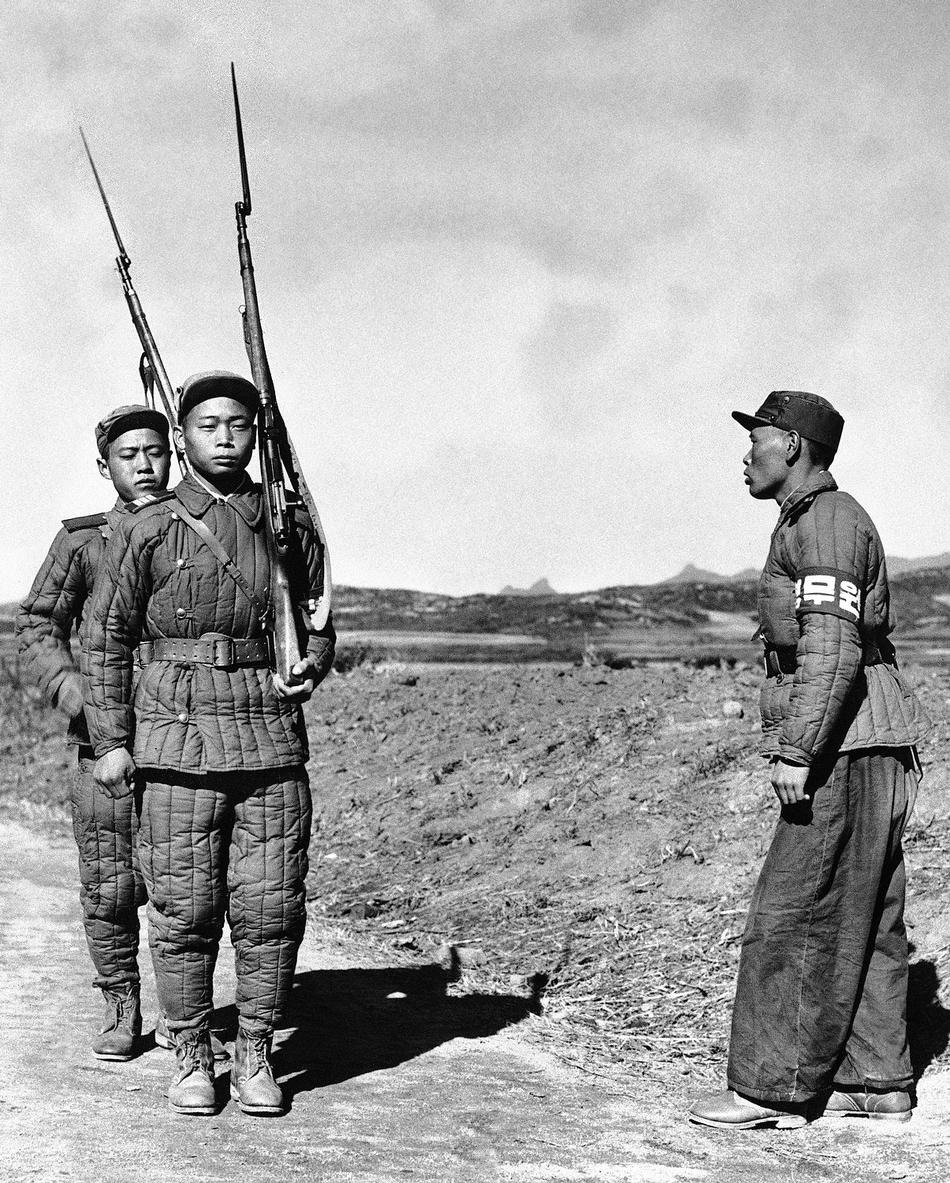
Apparently calling cadence, the North Korean Communist military policeman, at right, stands to the side of the read leading to the Panmunjom military armistice site on Oct. 28, 1951, as two armed Communist military policeman march in single file. Both, American and Communist military policemen spread about the Korean neutral zone, keep their eyes open for possible violations of the U.N.-Communists sire agreements. (AP Photo)
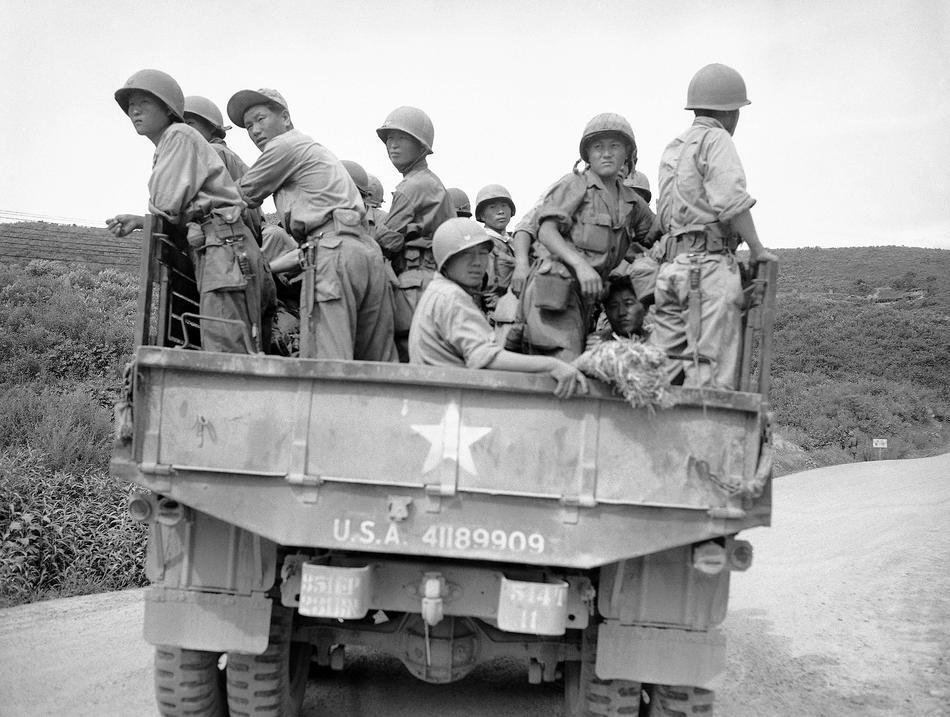
ROK soldiers look back at their former positions as their truck moves southward out of the demilitarized zone following the truce agreement on July 30, 1953. (AP Photo)

A line of soldiers on a United Nations patrol mission plod through deep snow up a hill in the central front of Korea on Feb. 3, 1951. (AP Photo/Max Desfor )
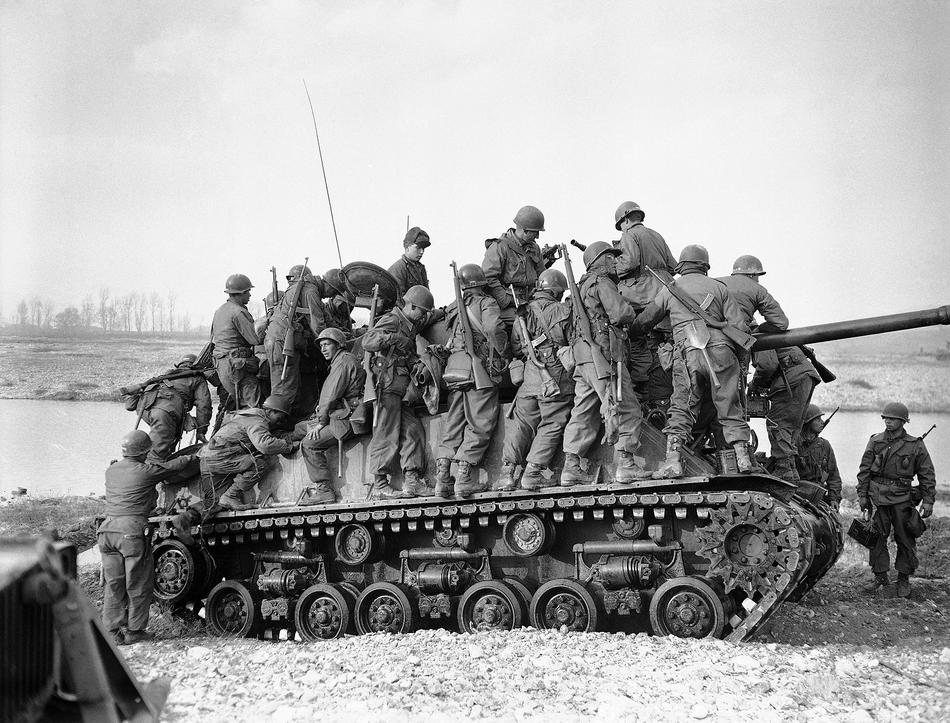
A U.S. First Cavalry Division tank takes on the appearance of a Times Square subway train at the rush hour as GI's pile aboard, on March 14, 1951 for a ride across the Hongchon River near the former Red supply base of Hongchon. (AP Photo/Jim Pringle)

Half-frozen Thailand sailors wait on East Korean Beach in enemy territory as a U.S. Navy helicopter takes off with injured crewmen for rescue destroyer standing offshore on Jan. 21, 1951. The sailors had waded ashore after their corvette Prasae Ran aground on January. This is one of a series of Navy photos on the rescue. (AP Photo)
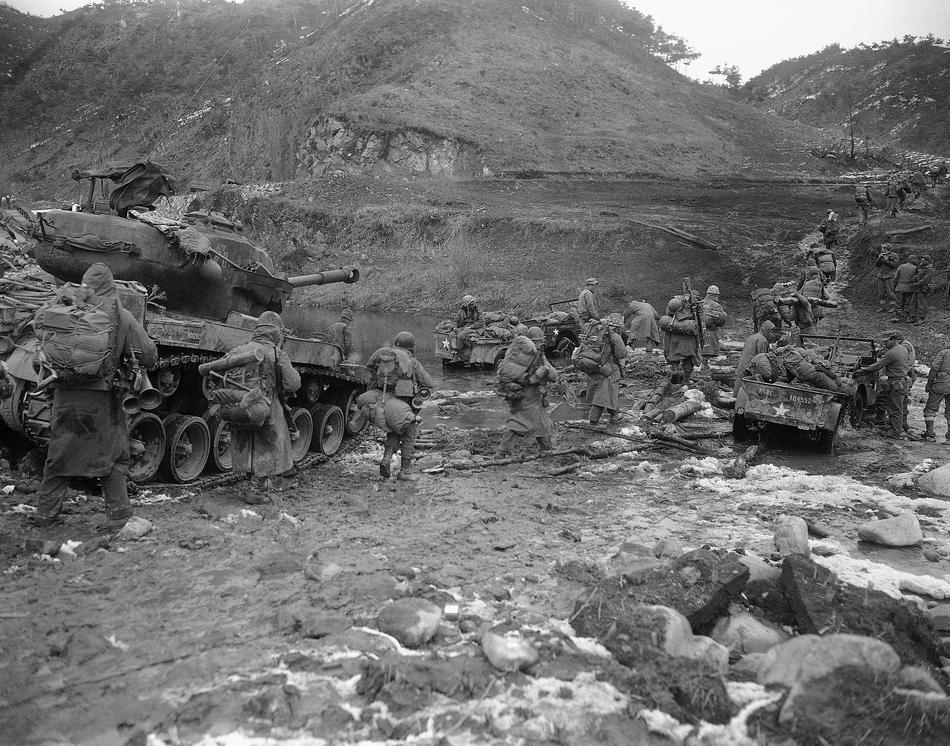
Tanks, jeeps and U.S. Marines slog through mud and a creek as they move forward against Chinese Communists on the central Korean front north of Hoengsong on March 7, 1951. (AP Photo/E.N.Johnson)

With clothes, helmet and rifle at his side, Sgt. Harry Heldreth of 1387 Lake View Road, Cleveland, Ohio, sunbathes on an Imjin River beach in Korea not far behind the front lines, July 4, 1951. (AP Photo/William Straeter)

Even though 'Armistice' talks are in progress at Kaesong, the mission of the 3rd Air Rescue Squadron continues. 3rd Air Rescue Helicopter as it settles, gently to Korean soil to take on an injured soldier being carried in a stretcher by medics on July 7, 1951. In a matter of minutes this soldier will be under the professional care of a medical officer at one of the mobile army surgical hospitals at the rear. Two Korean Laborers have stacked their 'A' frames to watch the patient loaded into the helicopters capsules. More than 2300 lives have been saved by Air Rescue personnel who are serving the Far East Air Forces during the Korean War. This number represents rescues made by all the 3rd Rescue Aircraft. (AP Photo)
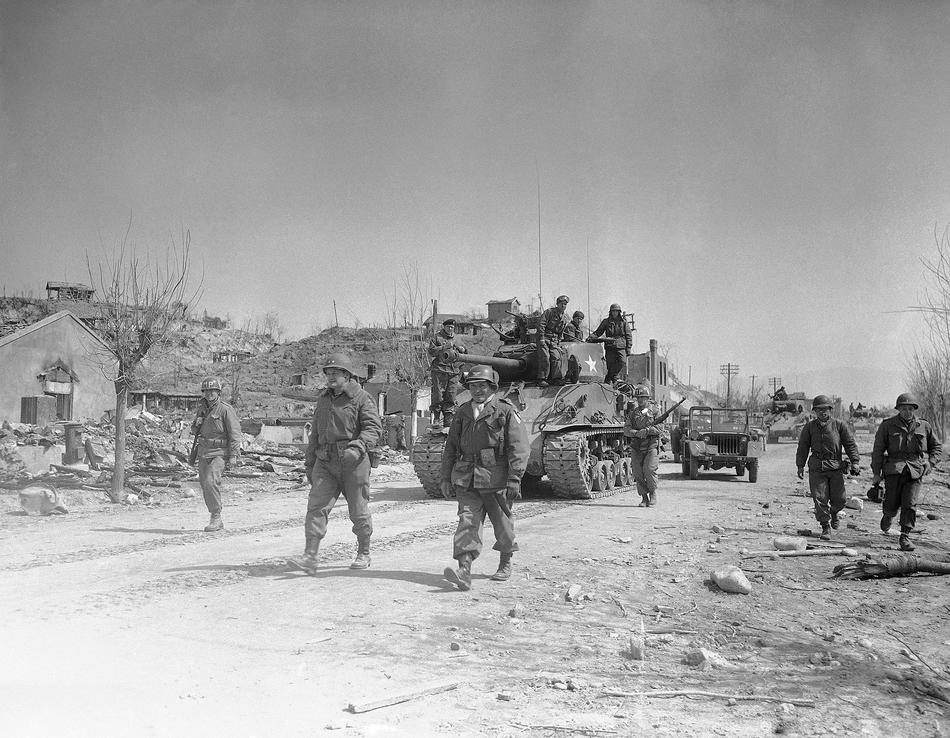
First tanks and troops of the First Cavalry Division enter shell-scarred city of Chunchon after the last communist stronghold on central Korean front fell on March 21, 1951. Walking in center of road are (left to right): Maj. Gen. Charles D. Palmer, commanding the First Cavalry; and Col. Marcel G. Grombez, Portland, Ore., a regimental commander. (AP Photo/Jim Pringle
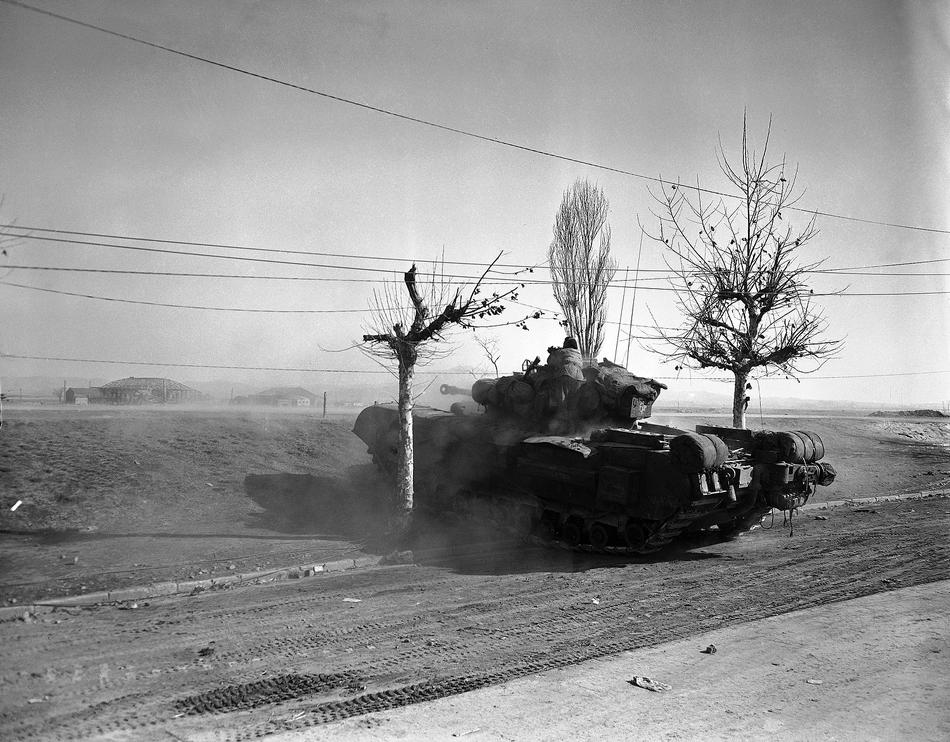
A British Churchill tank raises dust cloud as it shells the South Korean capital from its position across the Han River in Yondungpo, South Korea on Feb. 11, 1951. (AP Photo/Jim Pringle ) 영국군 차량은 정말 희귀사진같습니다.
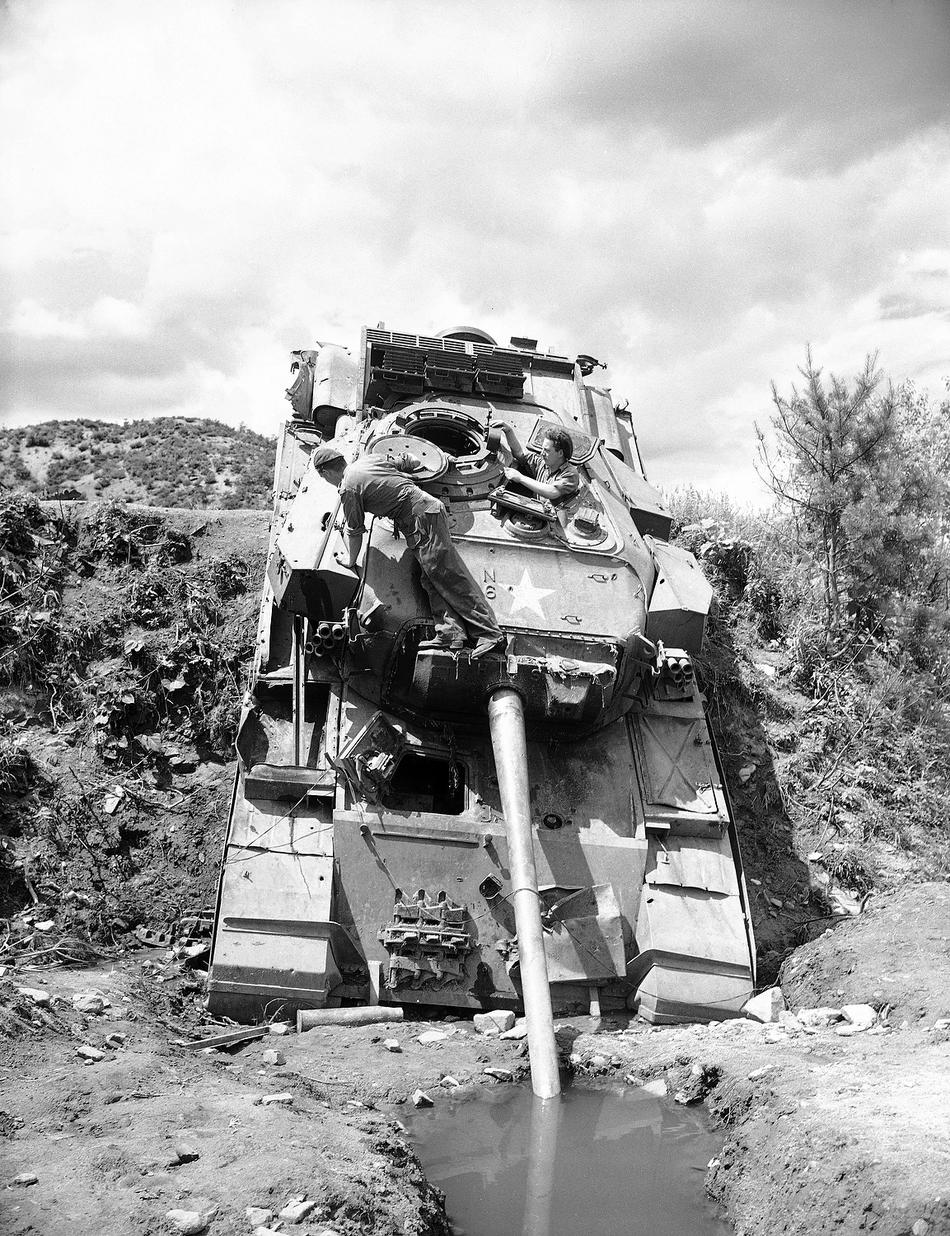
This British Centurian tank resembles an Elephant drinking water as it rests at a crazy angle, its gun barrel sticking into a waterhole on a Korean roadside north of Seoul on June 22, 1951. Working to salvage usable parts are Lance Corp. Douglas Bone, left, of Basings, Hampshire, Eng., and Trooper Ronald Rodda, Sunderland County, Durham, Eng. (AP Photo/E.N. Johnson 센추리온 사진...보기 드문데요..
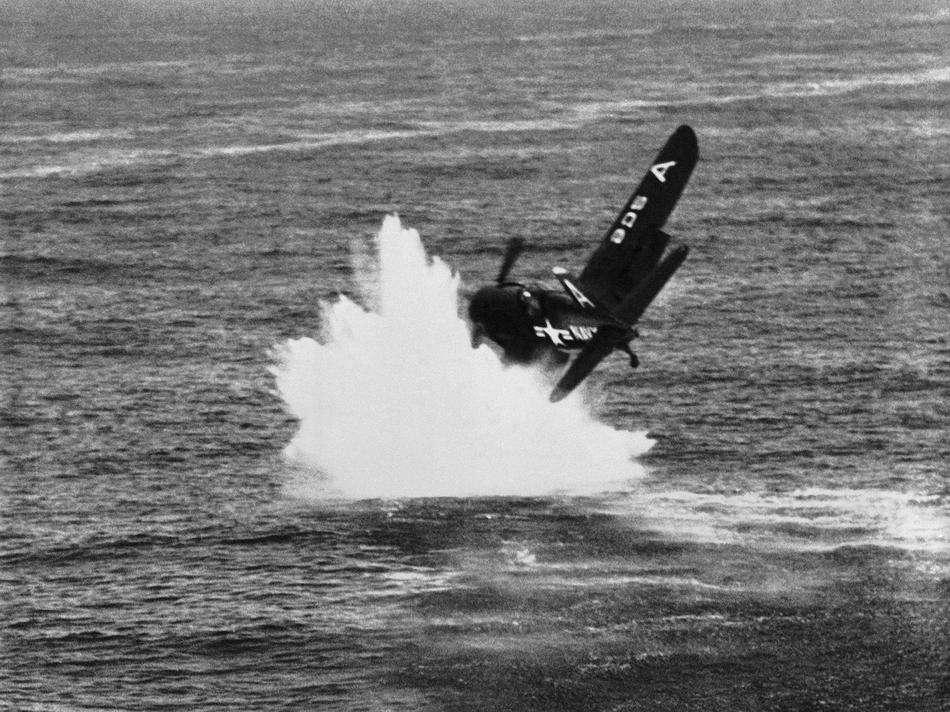
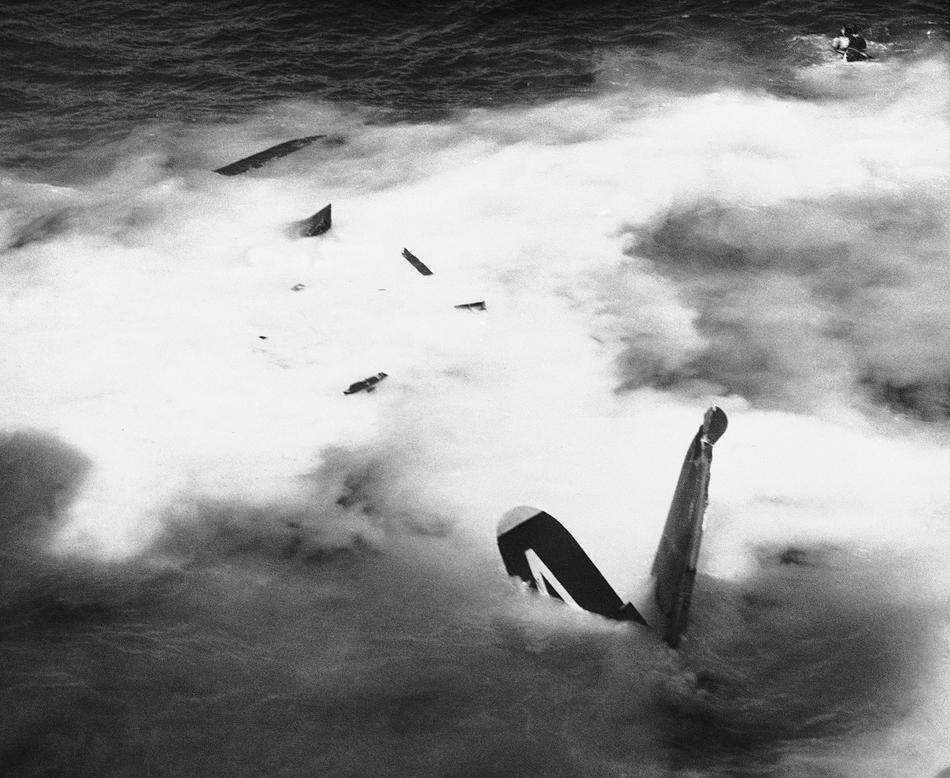
Navy Pilot Lt. Oliver Droege (upper right) of Kansas City, Mo., swims away from rapidly disintegrating wreckage of his corsair fighter plane seconds after he had crashed into the Sea of Japan during takeoff from the carrier USS Boxer on May 22, 1951. A hovering helicopter picked him up unhurt within a minute. (AP Photo)

A Marine assault squad member uses a flame thrower to clean out an enemy pillbox on Korea?s central front on May 7, 1951. Smoke from white phosphorus mortar shells shrouds the assault area to mark the targets and mask the attack. (AP Photo)
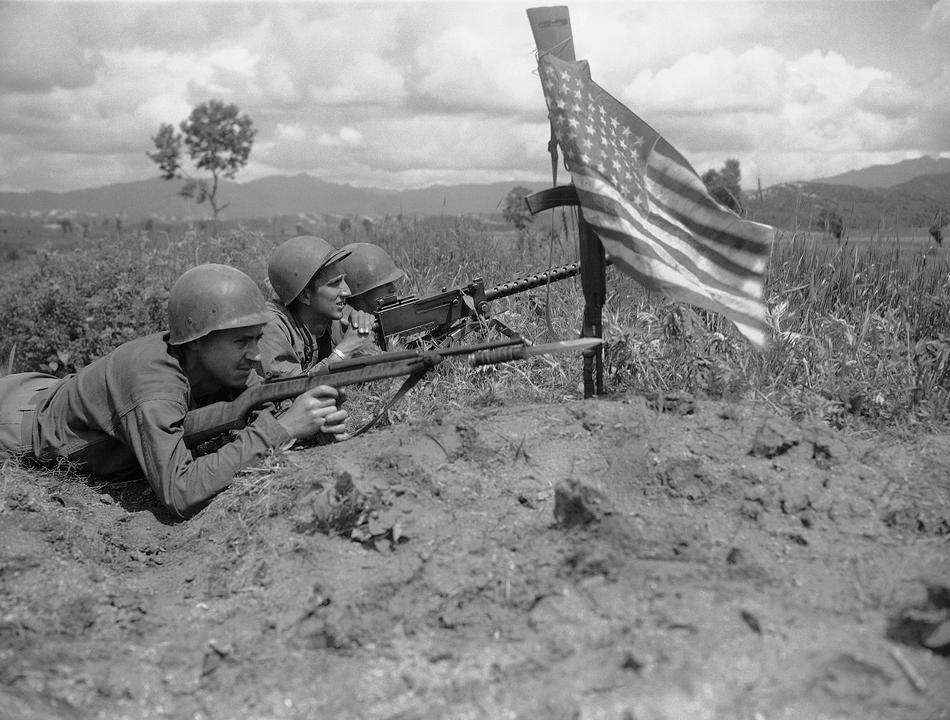
GI's guarding an artillery outpost on Korea's west-central front on June 9, 1951 make sure the Chinese will know they are facing U.S. soldiers . Standing guard under stars and stripes waving from a carbine are, left to right: Pvt. William Jones, Havre De Grace, Md.; Pfc. Roderick Fernandez, Laurelton, New York City; and Pfc. James Garrick, Dickinson, Ala. (AP Photo/Robert Schutz )
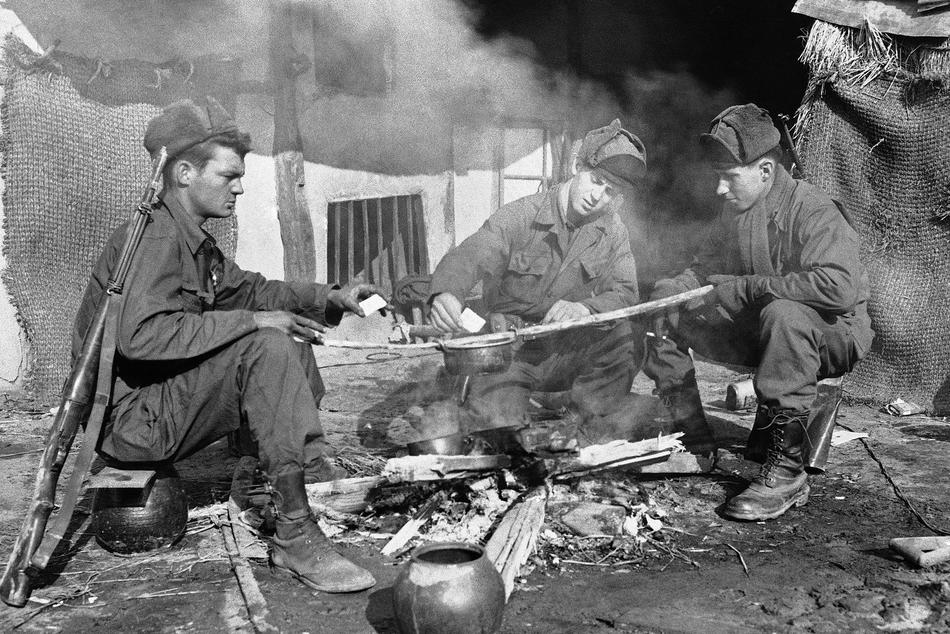
Sgt. Billy Barber, San Francisco, Calif., Pfc. Billy J. Hunt, Kansas City, Mo., and Pfc. Joseph J. Doleys, Cleveland, O., left to right, all attached to the 25th infantry division, pool their efforts as they prepare some hot food during a Lull in the fighting against Chinese communist forces in Korea on Feb. 16, 1951. (AP Photo)
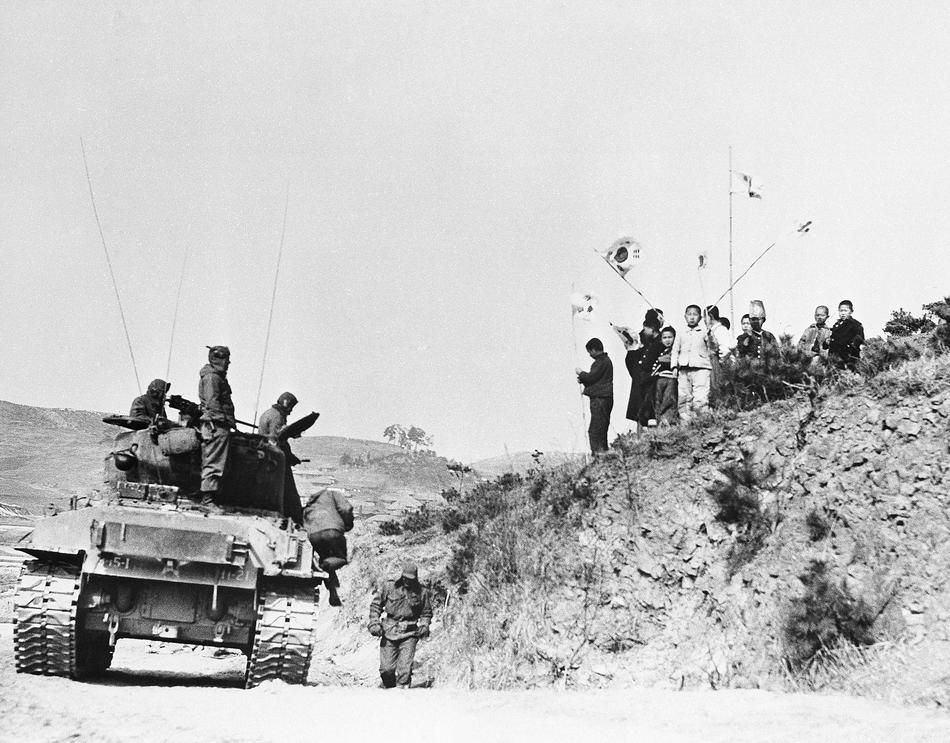
South Korean children turn out with flags to greet U.N. forces advancing along the Han River front in South Korea on March 7, 1951. (AP Photo)
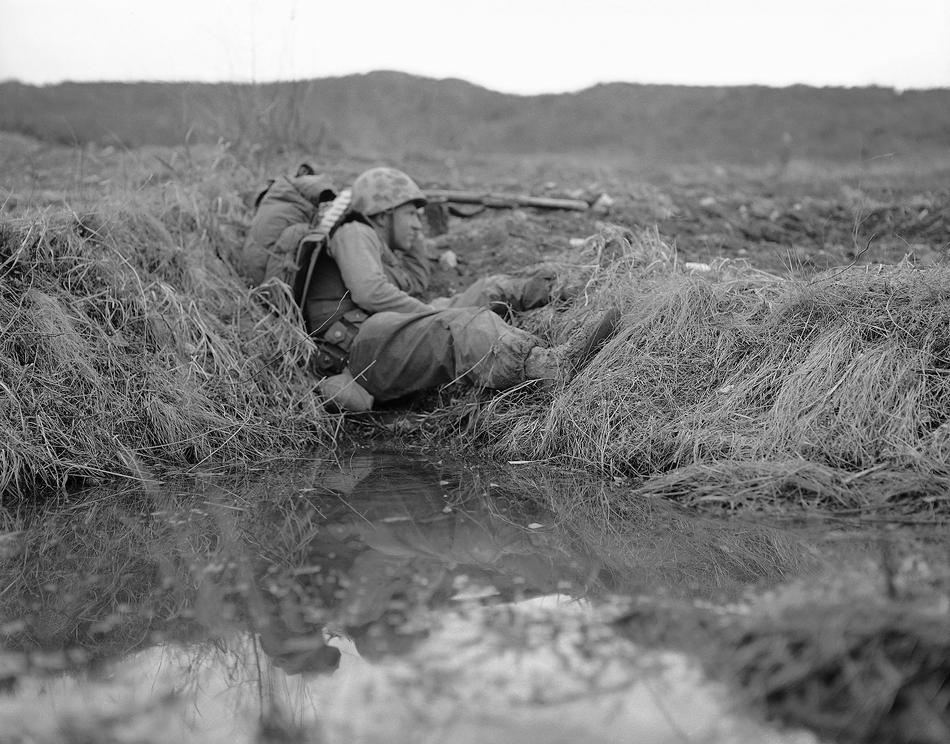
Leathernecks of the U.S. 1st marine division dig in at Paddy field in the Vegas Hill sector of Korean western front on March 26, 1953. At top a marine digs a foxhole for protection against forthcoming mortar barrage while another (bottom) uses natural ground contour for protection as he surveys the battleground in front of him. (AP Photo/George Sweers )

American soldiers (foreground) dig in to set up a machine gun position on side of ridge overlooking a vital supply road in the central sector near Kumsong, Korea on July 20, 1953. In the background, trucks and vehicles with men and supplies prepare to move Northward in the area from which they had withdrawn during heavy Chinese attacks. (AP Photo/George Sweers)
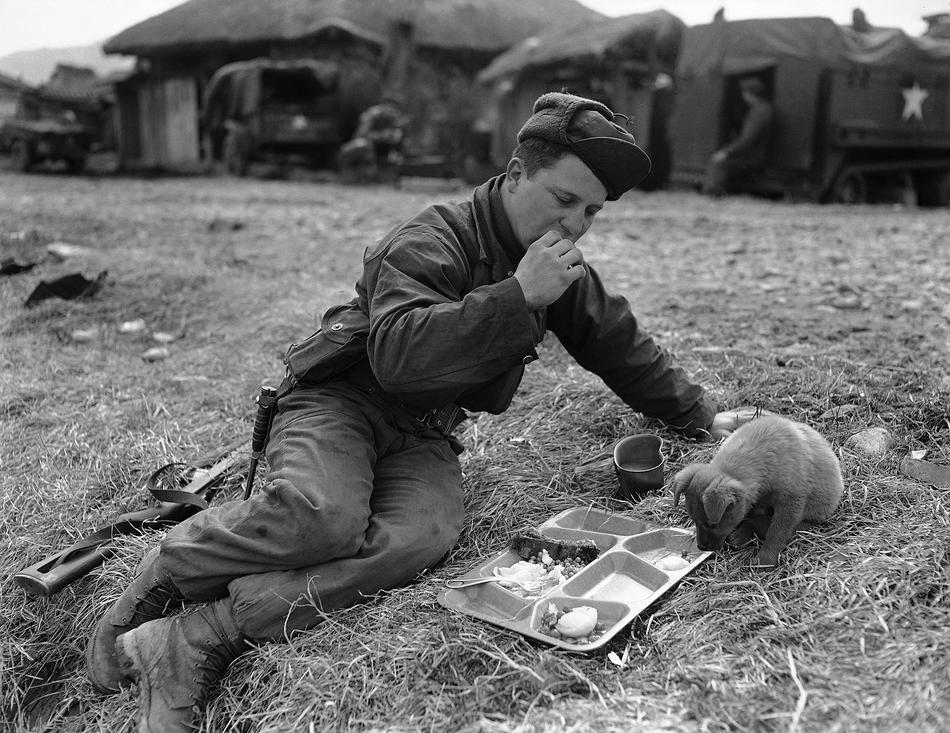
Pvt. Dick L. Powell, of Findlay, Ohio, and his friend 'Fuzzy' share a meal near the front in 35th Reg, 25th Div area on March 12, 1951. 8-- Fuzzy looks on hungrily then 9 and 10 he digs in. (AP Photo/James Martenhoff)
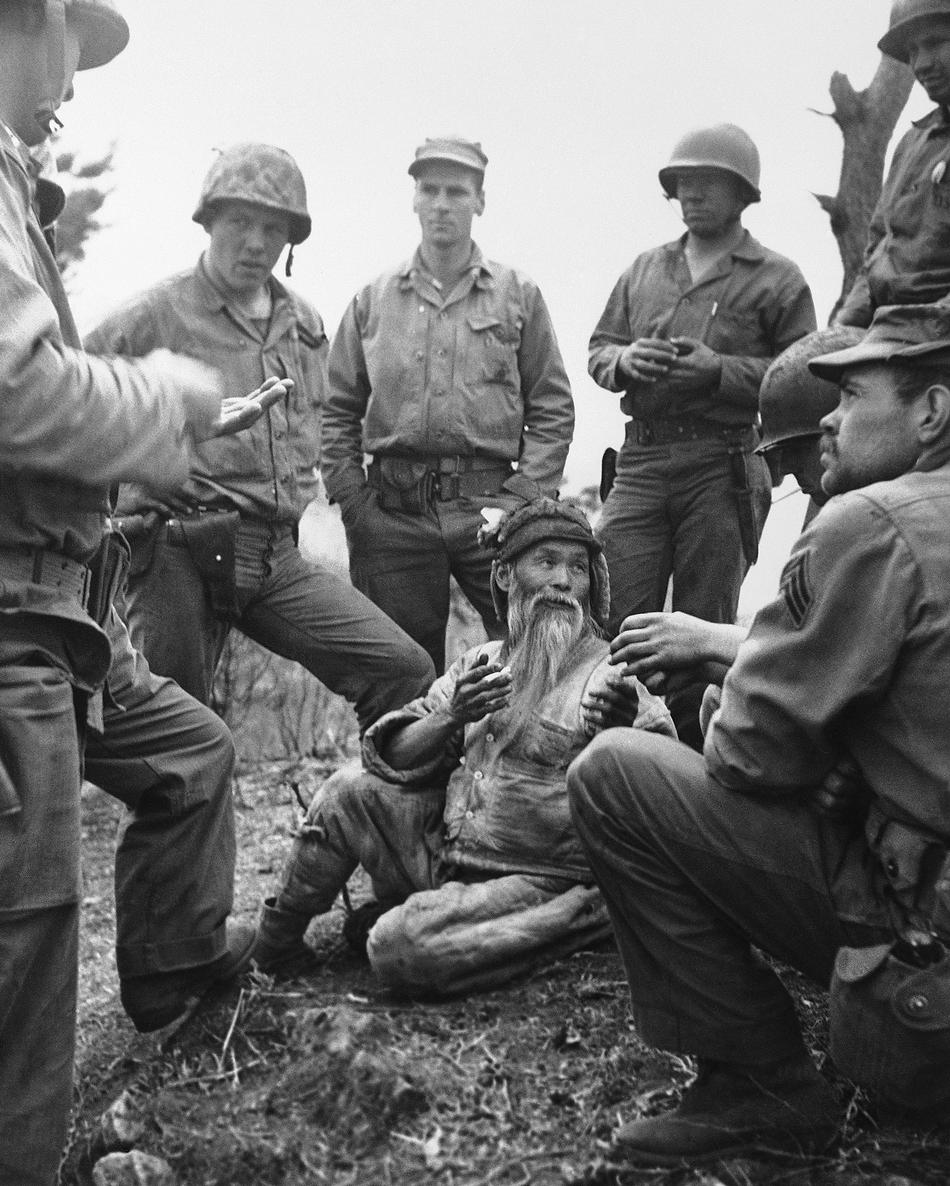
A bearded North Korean, with an American cigarette between gnarled fingers, talks with gestures to a U.S. Marine patrol on April 28, 1951 which flushed him out of


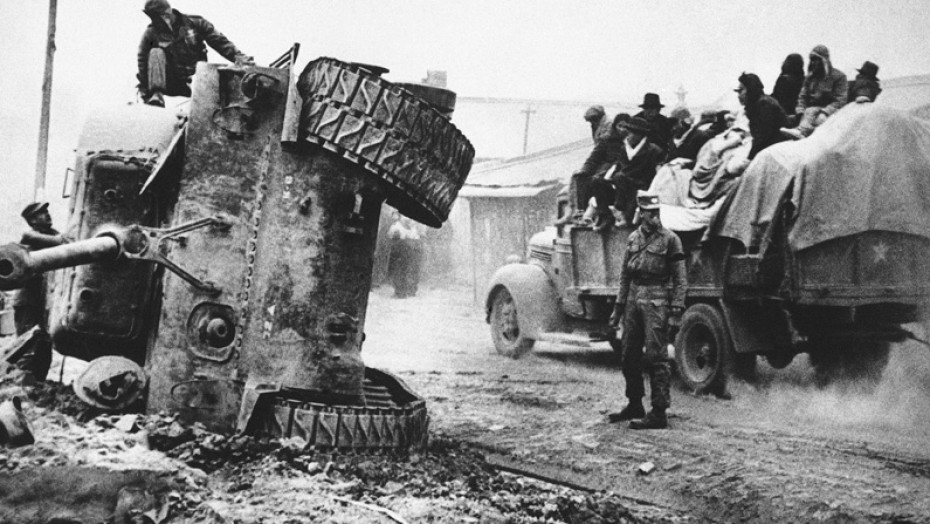
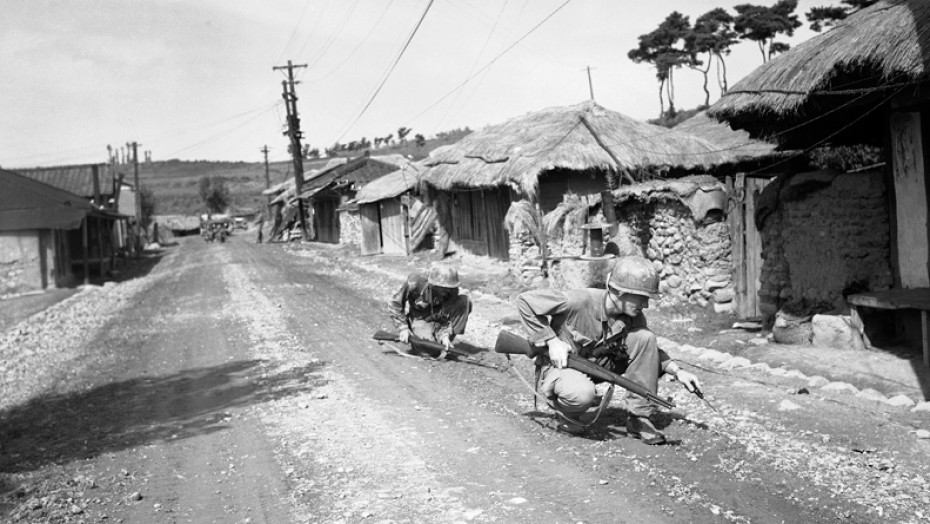
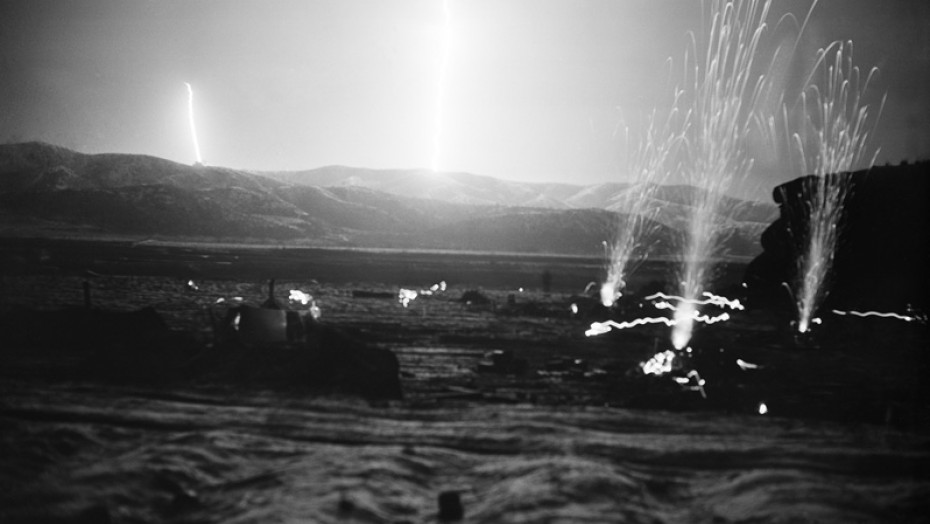
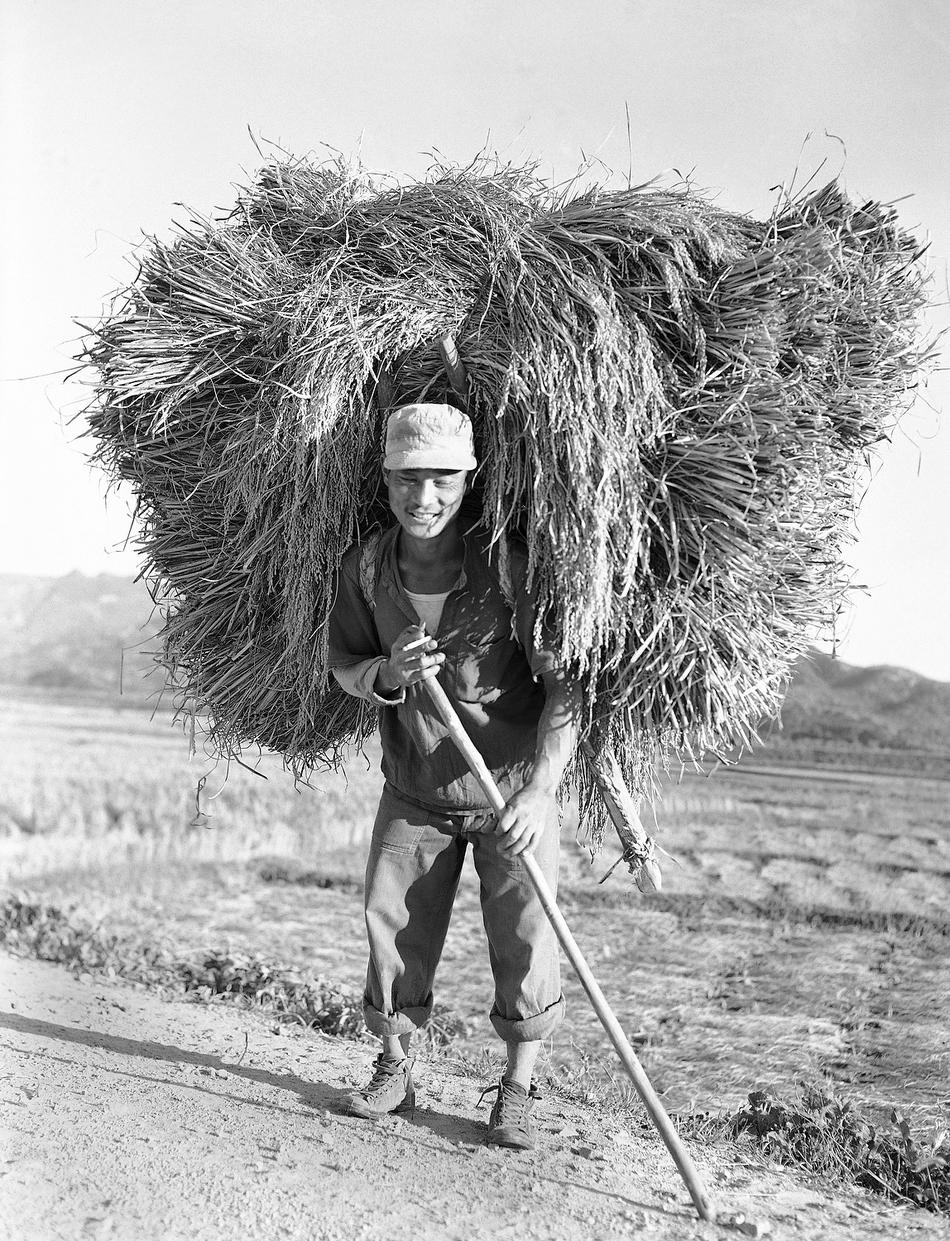
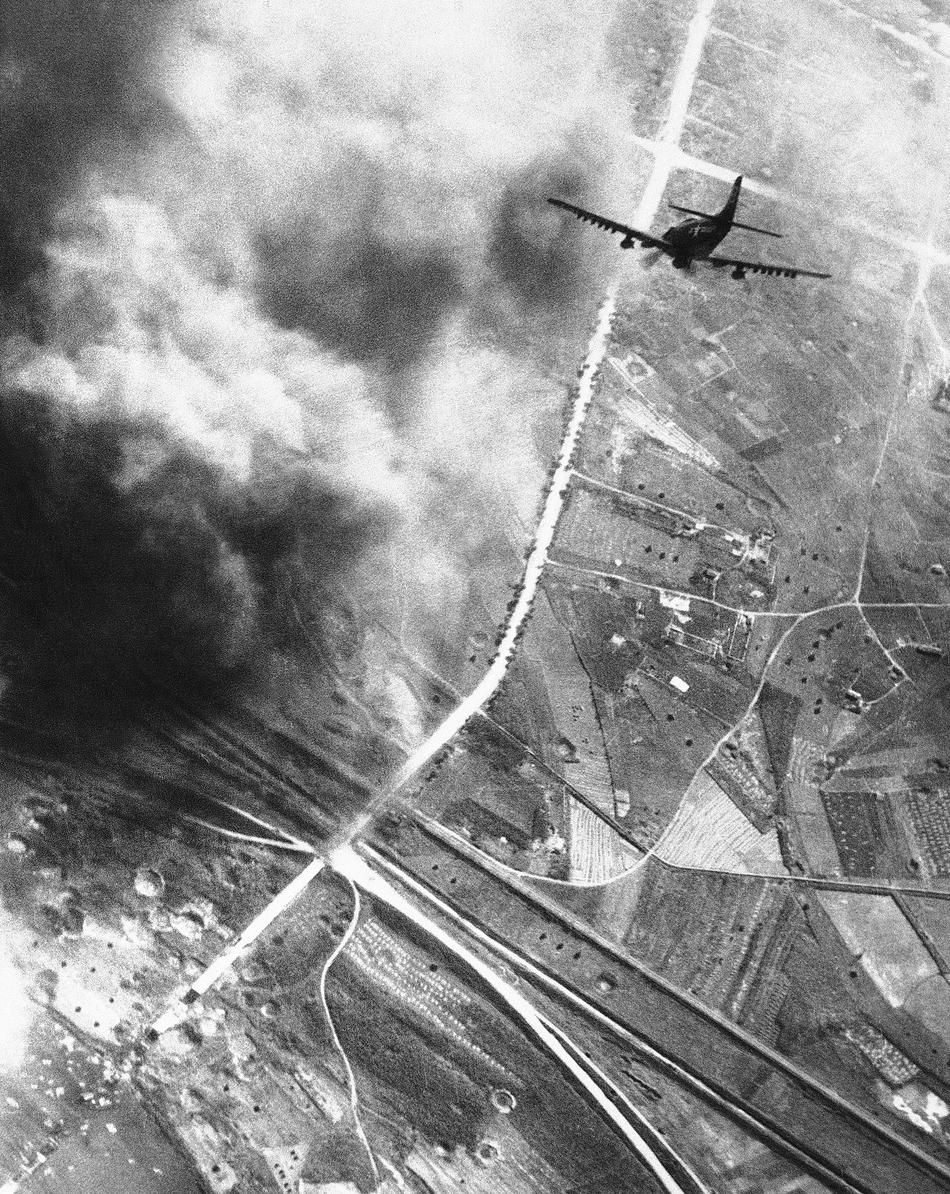



 1
1


댓글 [31]
후손들에게 어떤일이 있드래도 일어나서는 안될일! 온국민이 합심하고 단결하여 내부의 종북세력을
철저하게 몰아내고 국방력을 보다 강력하게 발전시시켜야하는 인식을 심어줄수있는 자료로 활용하였으면 ~. 특히 초,중,고등학생,그리고 대학생들 .
yskim500 | 2013-10-16 | 추천 0
충혼 | 2013-10-16 | 추천 1
후손들에게 어떤일이 있드래도 일어나서는 안될일! 온국민이 합심하고 단결하여 내부의 종북세력을
철저하게 몰아내고 국방력을 보다 강력하게 발전시시켜야하는 인식을 심어줄수있는 자료로 활용하였으면 ~. 특히 초,중,고등학생,그리고 대학생들 .
승민의기사 | 2013-10-16 | 추천 0
morpheus | 2013-10-16 | 추천 0
산인 | 2013-10-16 | 추천 0
lostname | 2013-10-16 | 추천 0
스티븐 | 2013-10-16 | 추천 0
만세보령 | 2013-10-16 | 추천 0
위장복 | 2013-10-16 | 추천 1
다시 한 번 전쟁이 일어난다면 우리 손으로 통일을 할 수 있도록 준비를 해야 할 것입니다... 일어나지 않도록 하는 것이 더 중요하지만..
스티븐 | 2013-10-16 | 추천 0
만세보령 | 2013-10-16 | 추천 0
스티븐 | 2013-10-16 | 추천 0
반도너머로 | 2013-10-16 | 추천 1
스티븐 | 2013-10-16 | 추천 0
레오나르도 다김치 | 2013-10-16 | 추천 0
Mad duck | 2013-10-15 | 추천 0
피냄새가나는듯하기도하고 왠지모를 긴장이 ......
동내 주민분들도 요즘산나물채취좀하시는듯한데 (전사자 유해발굴후) 그전엔 풀뿌리하나 손안댓엇다고들 그래서 풀이 밀림처럼 우거진 그능선을 타다보면 뭔가나올듯 바람이 불면 누군가 넋두리하는듯
반백년을 넘어도 서린기운은 서늘하고 인적조차 뜸합니다.
kamov50 | 2013-10-15 | 추천 0
스티븐 | 2013-10-15 | 추천 0
만세보령 | 2013-10-14 | 추천 0
충무공 | 2013-10-14 | 추천 0
Paladine | 2013-10-14 | 추천 0
만세보령 | 2013-10-14 | 추천 0
사진에 붙은 설명을 그대로 붙어 놓고 와서 그런 오류같습니다. 저도 콜세어는 이상한 것 같구요. 전차도 누운것은 셔먼이 맞다고 봅니다. 그러나 일단 원문을 그대로 놓은 것이 맞은 것 같아서 설명도 붙여 놓았습니다.
kamov50 | 2013-10-14 | 추천 0
두번째 사진의 'Jets launching from an aircraft carrier...(항공모함에서의 제트기 발진)'으로 설명이 붙어 있는데 사진은 프로펠러 전투기인 F4U-4 콜세어(Corsair, 커세어라고도 읽죠)의 발진 사진입니다. 사진에서는 기수의 프로펠러가 보이지 않으니 작성자가 제트기로 착각한 것으로 보입니다.
전차가 옆으로 누워있는 사진에서 퍼싱전차로 설명된 것은 M4A3E8 셔먼 전차입니다. 전쟁기념관 옥외에 저 전차와 동일한 차량이 전시되어 있습니다.
Justice32 | 2013-10-14 | 추천 0
combat | 2013-10-14 | 추천 1
black jack | 2013-10-14 | 추천 0
black jack | 2013-10-14 | 추천 0
Alchemist | 2013-10-14 | 추천 0
옆 널부러져 있는 것은 셔먼입니다.
daeguug | 2013-10-14 | 추천 0
삐죽이 | 2013-10-14 | 추천 0